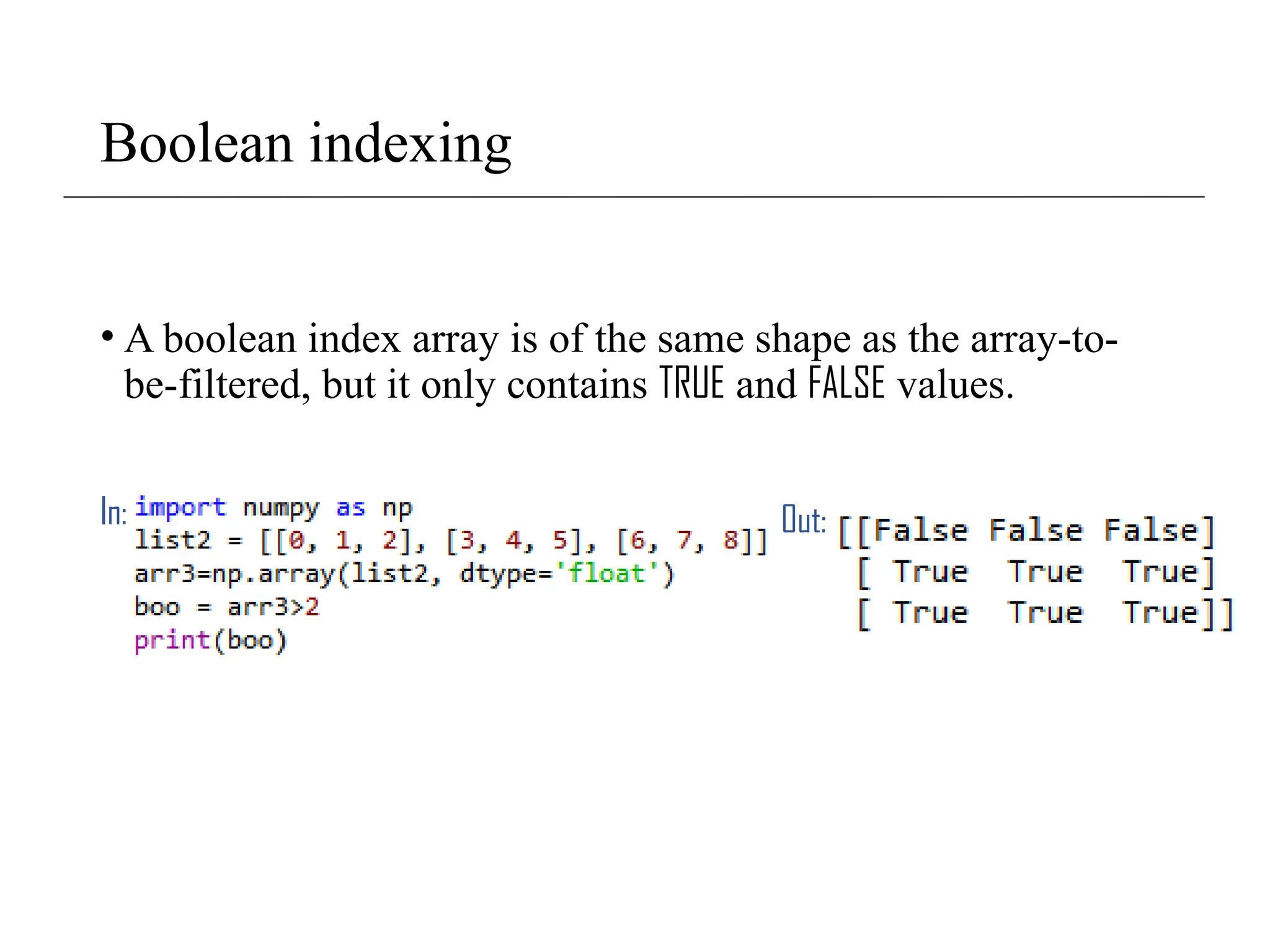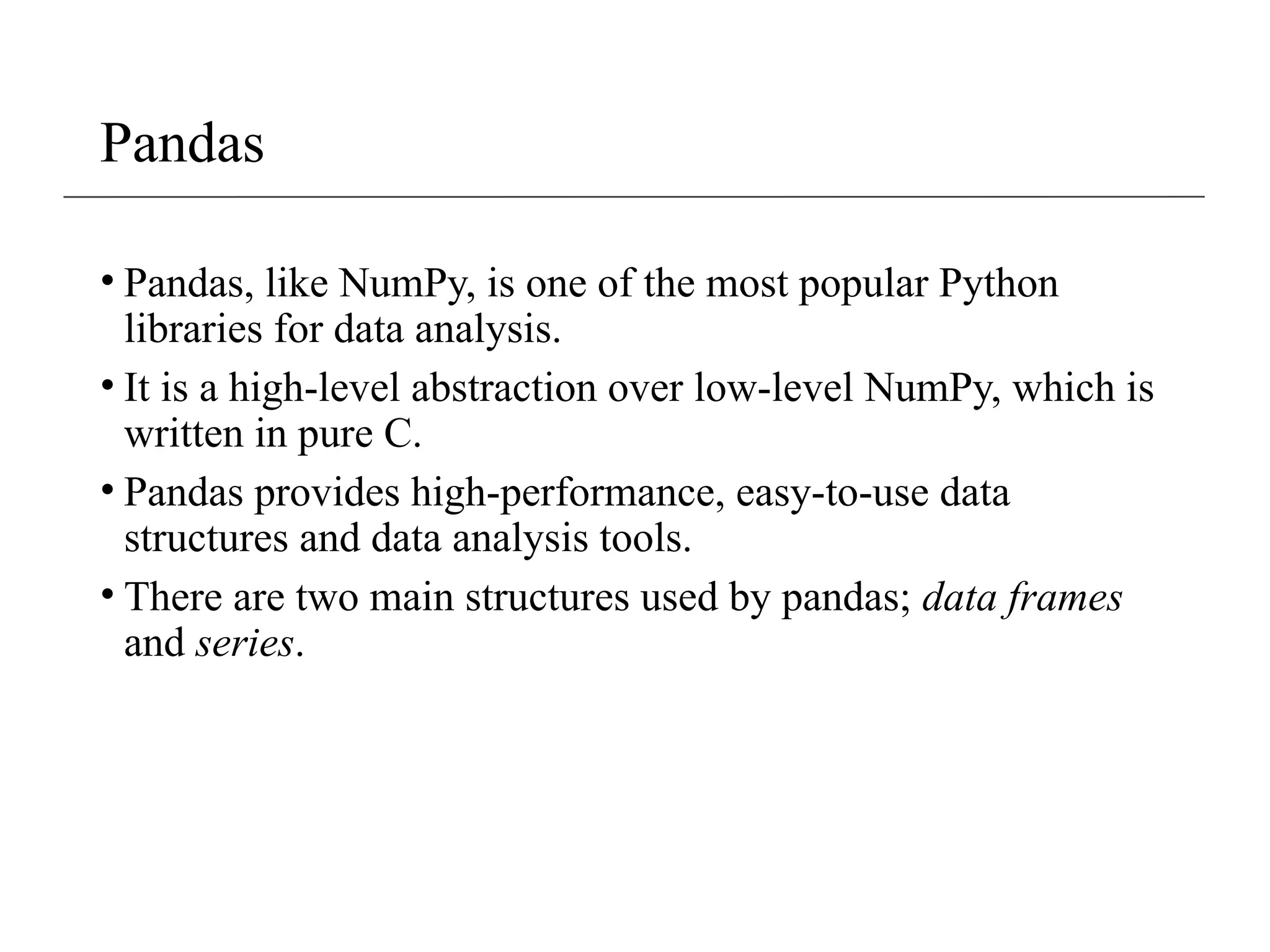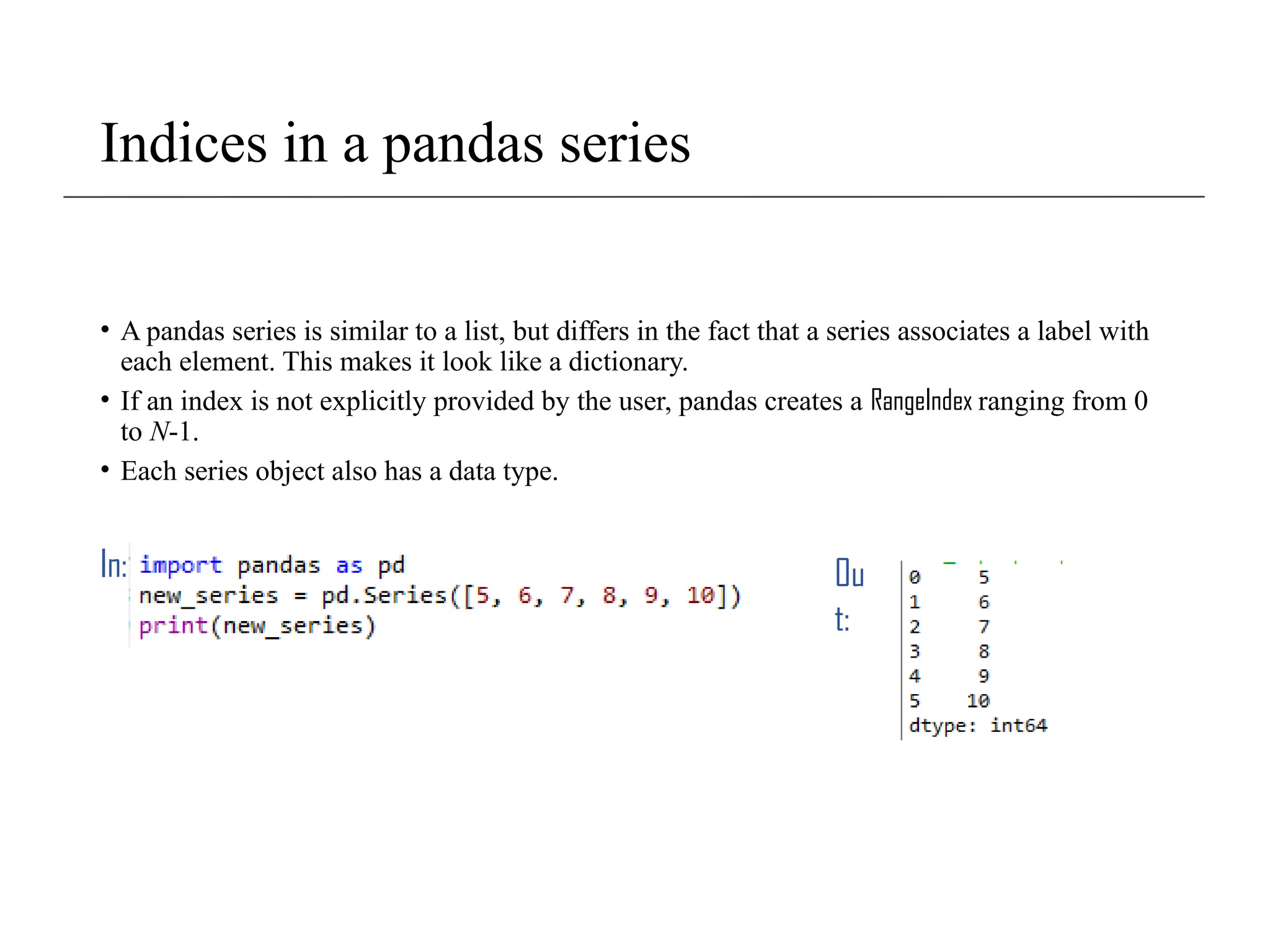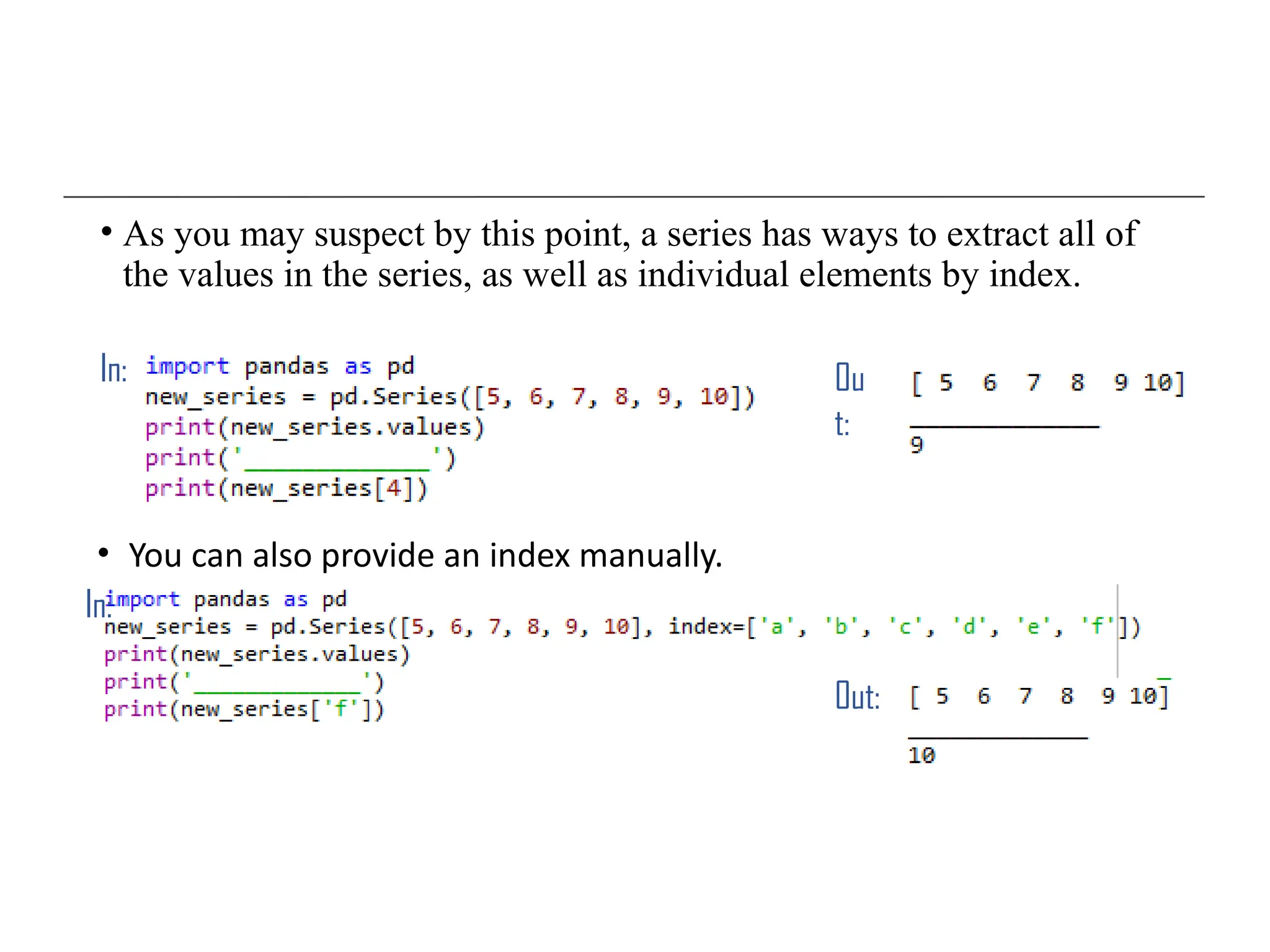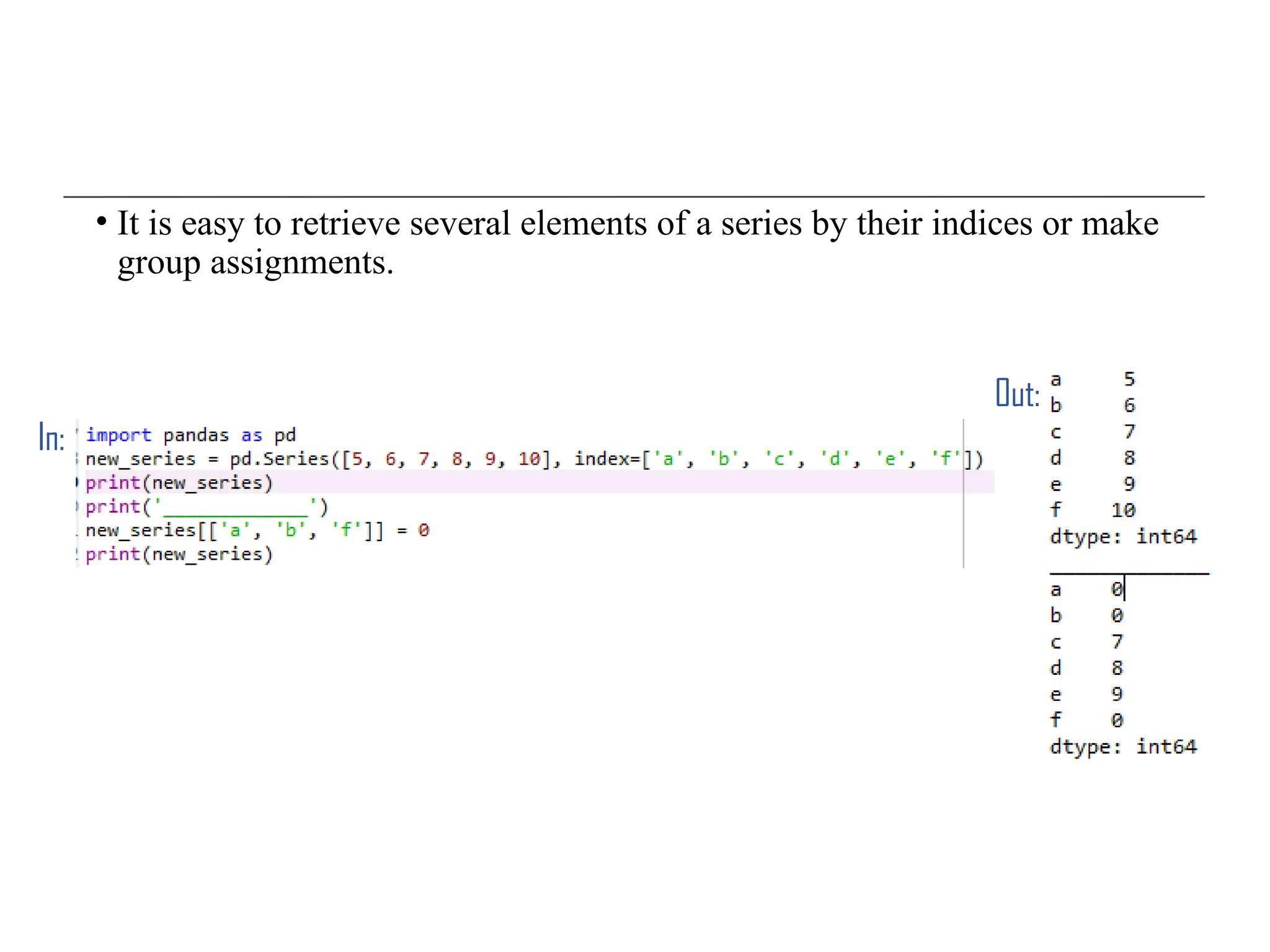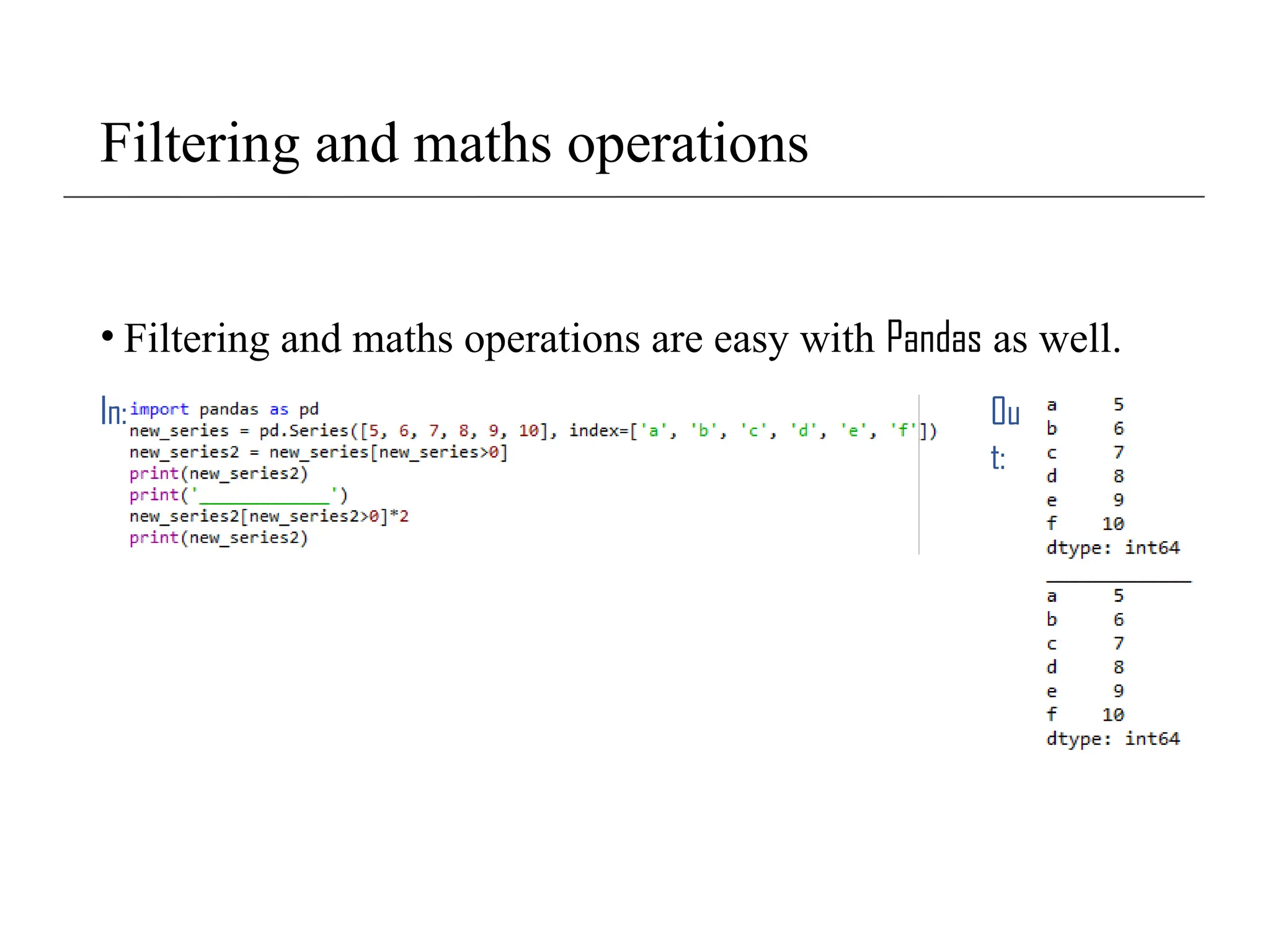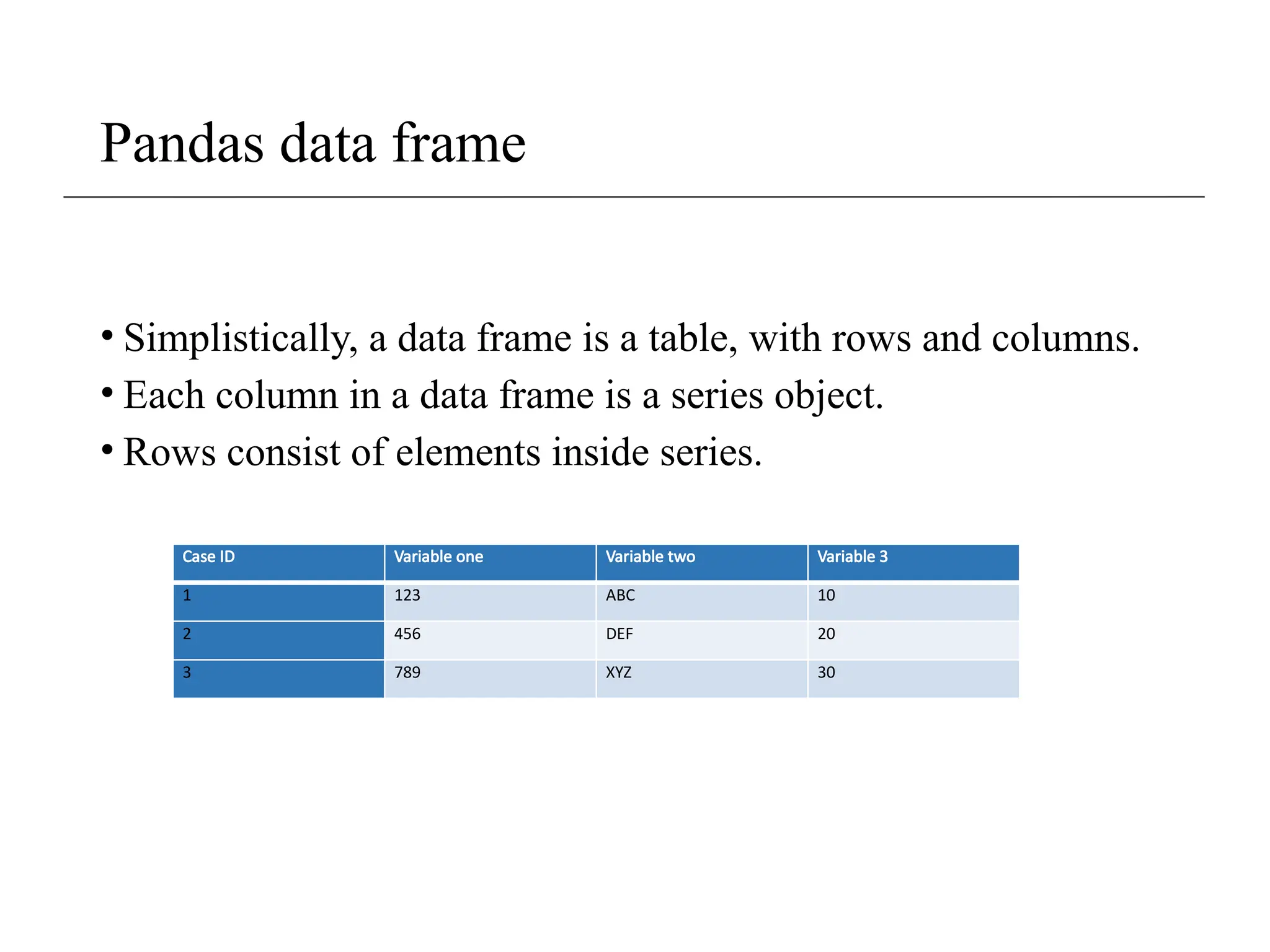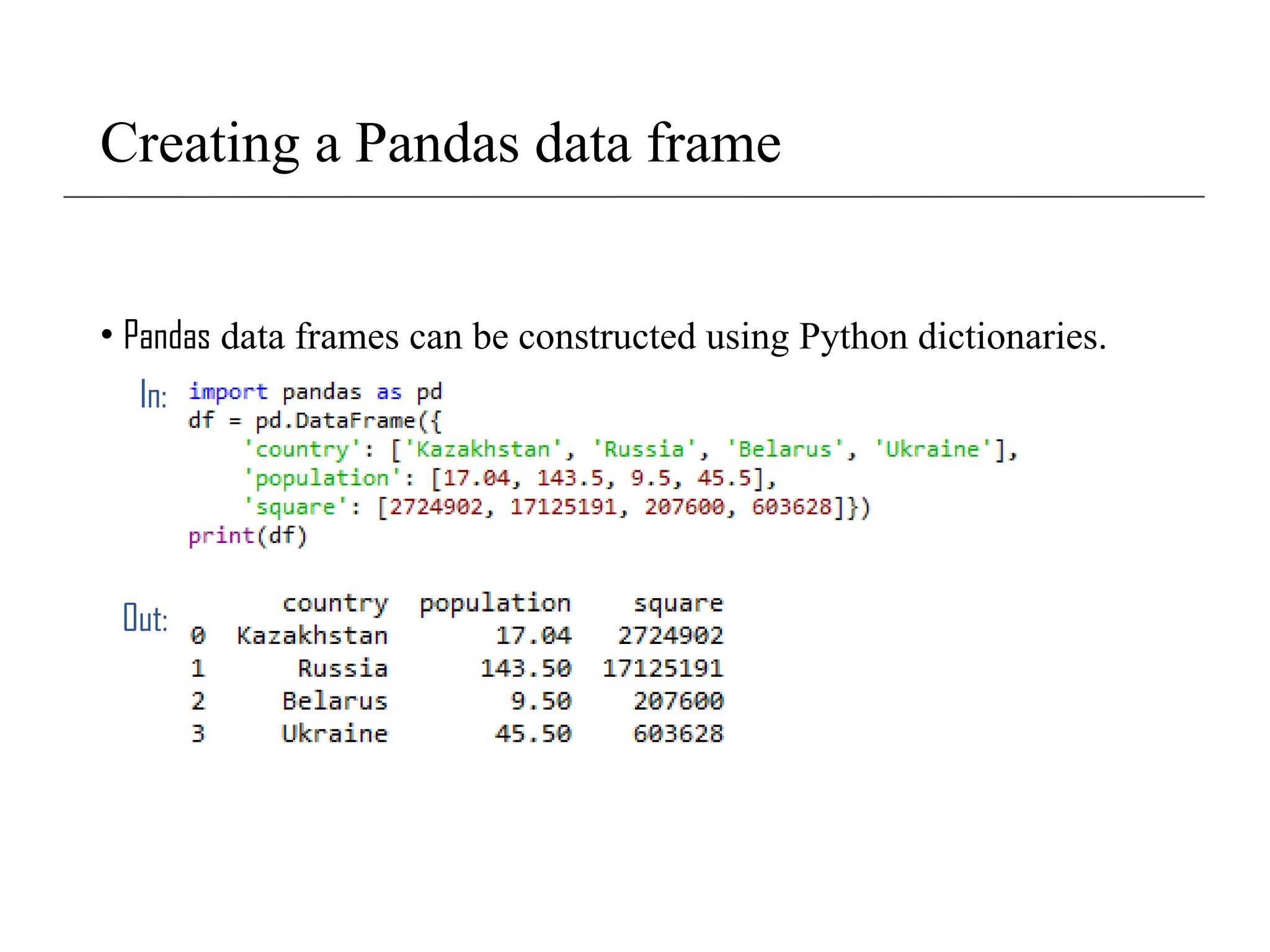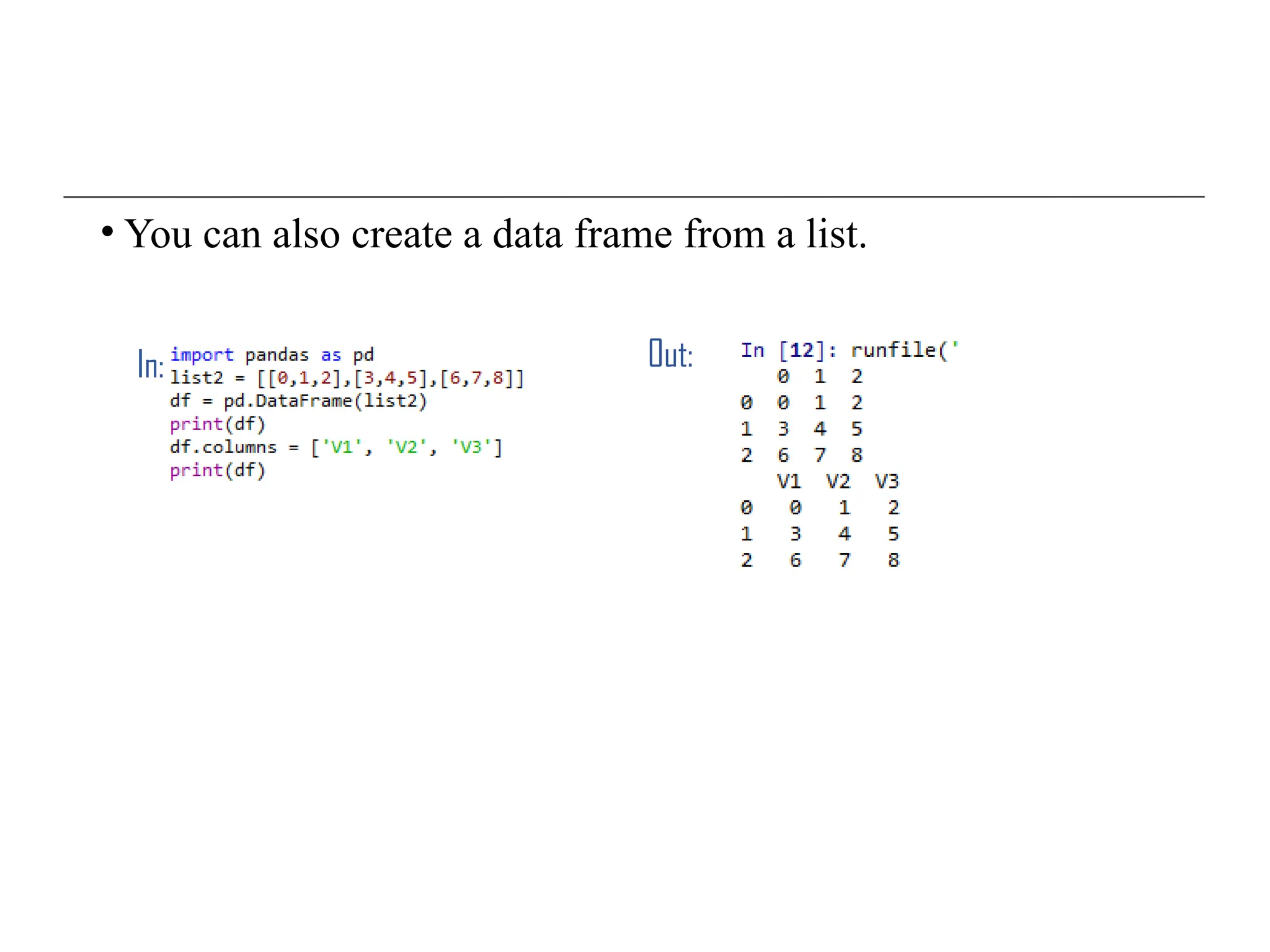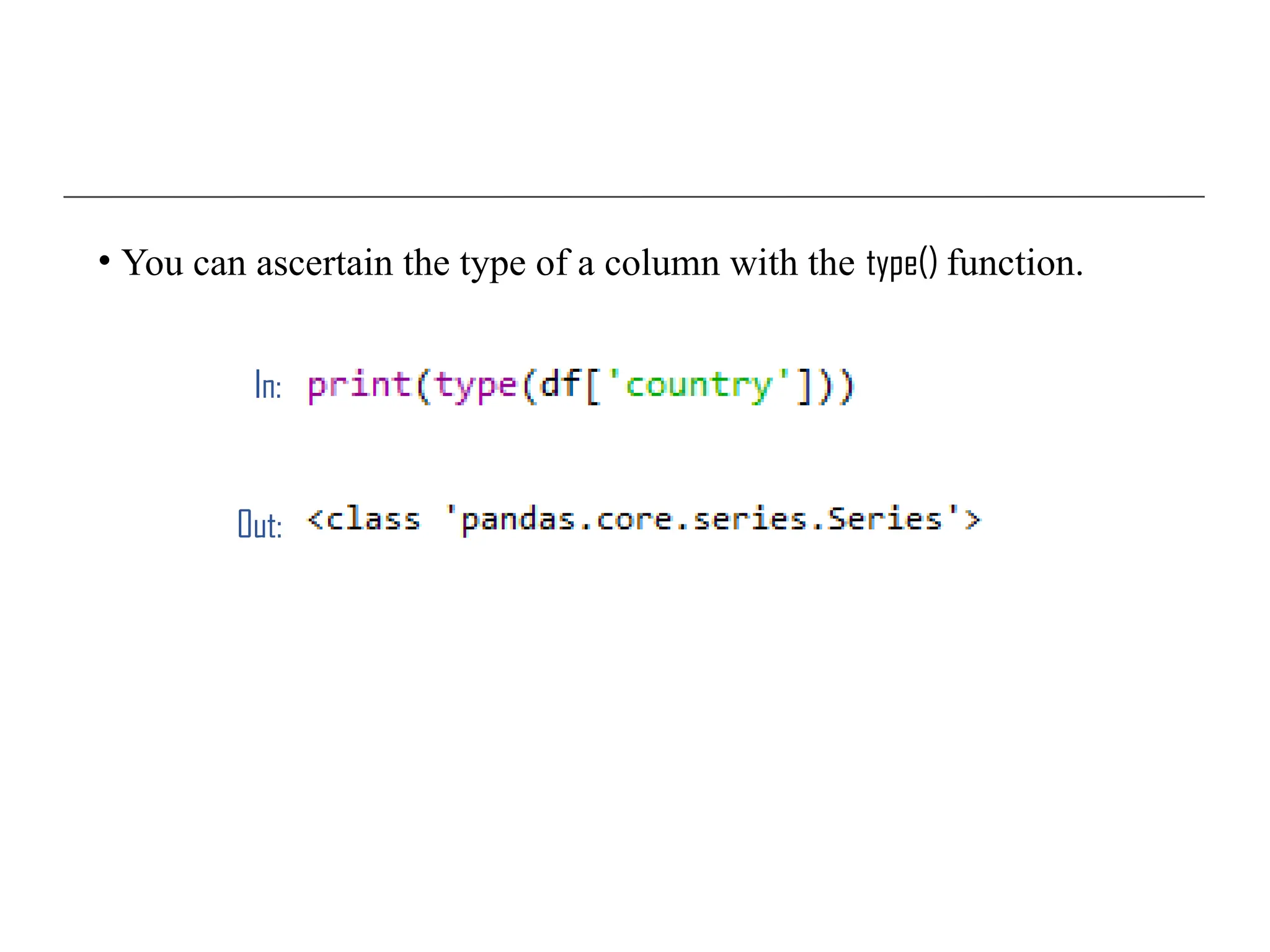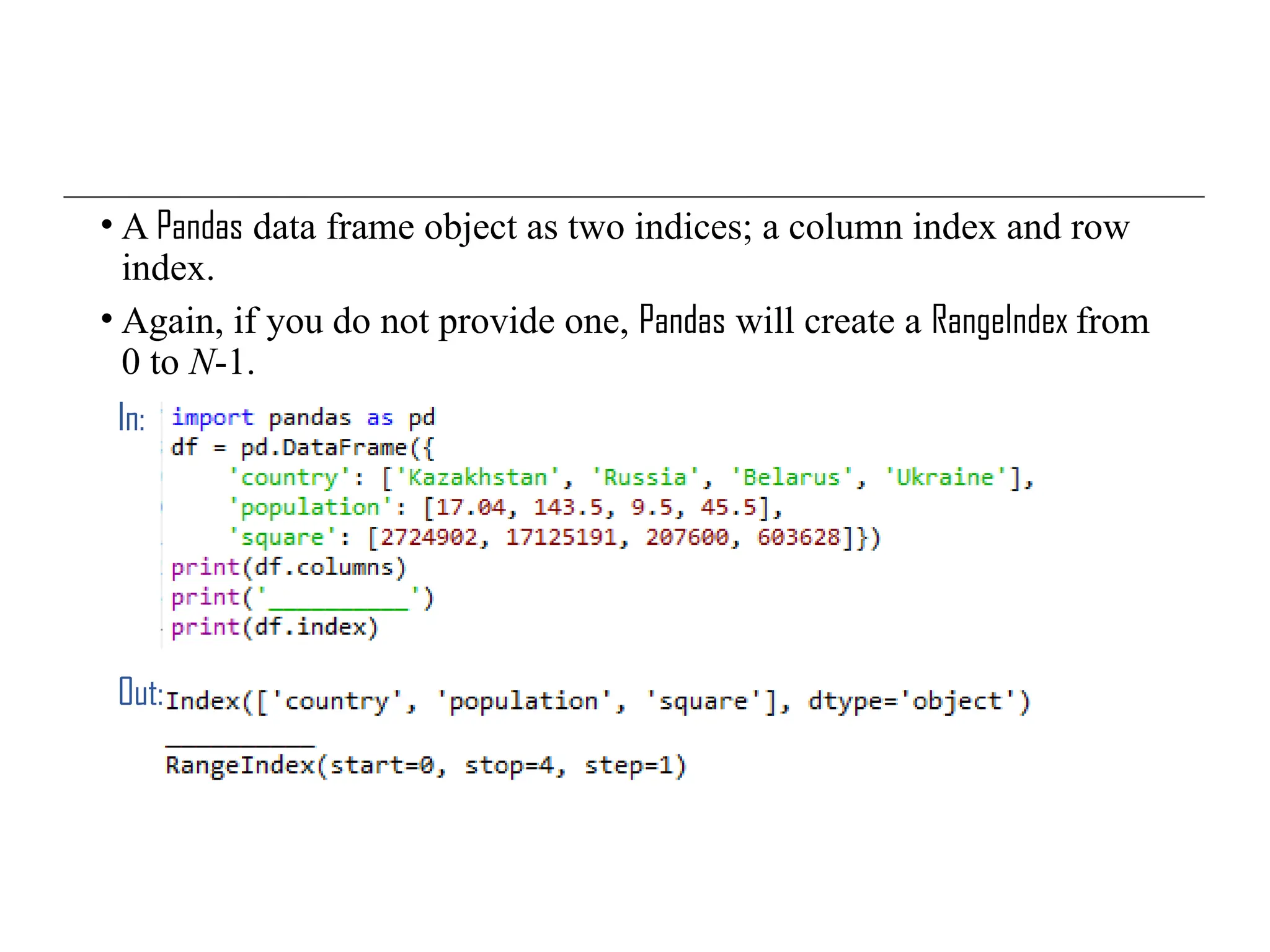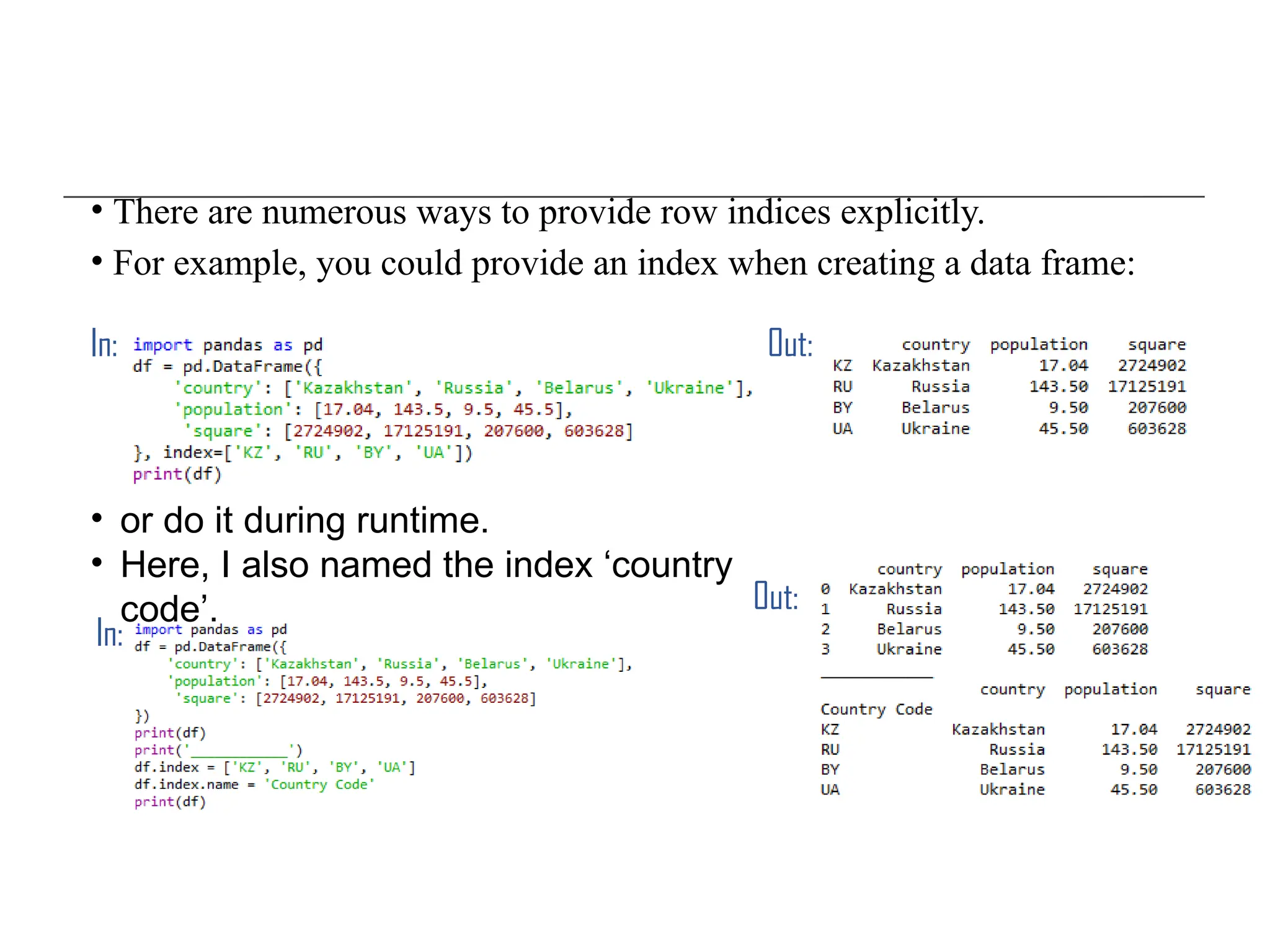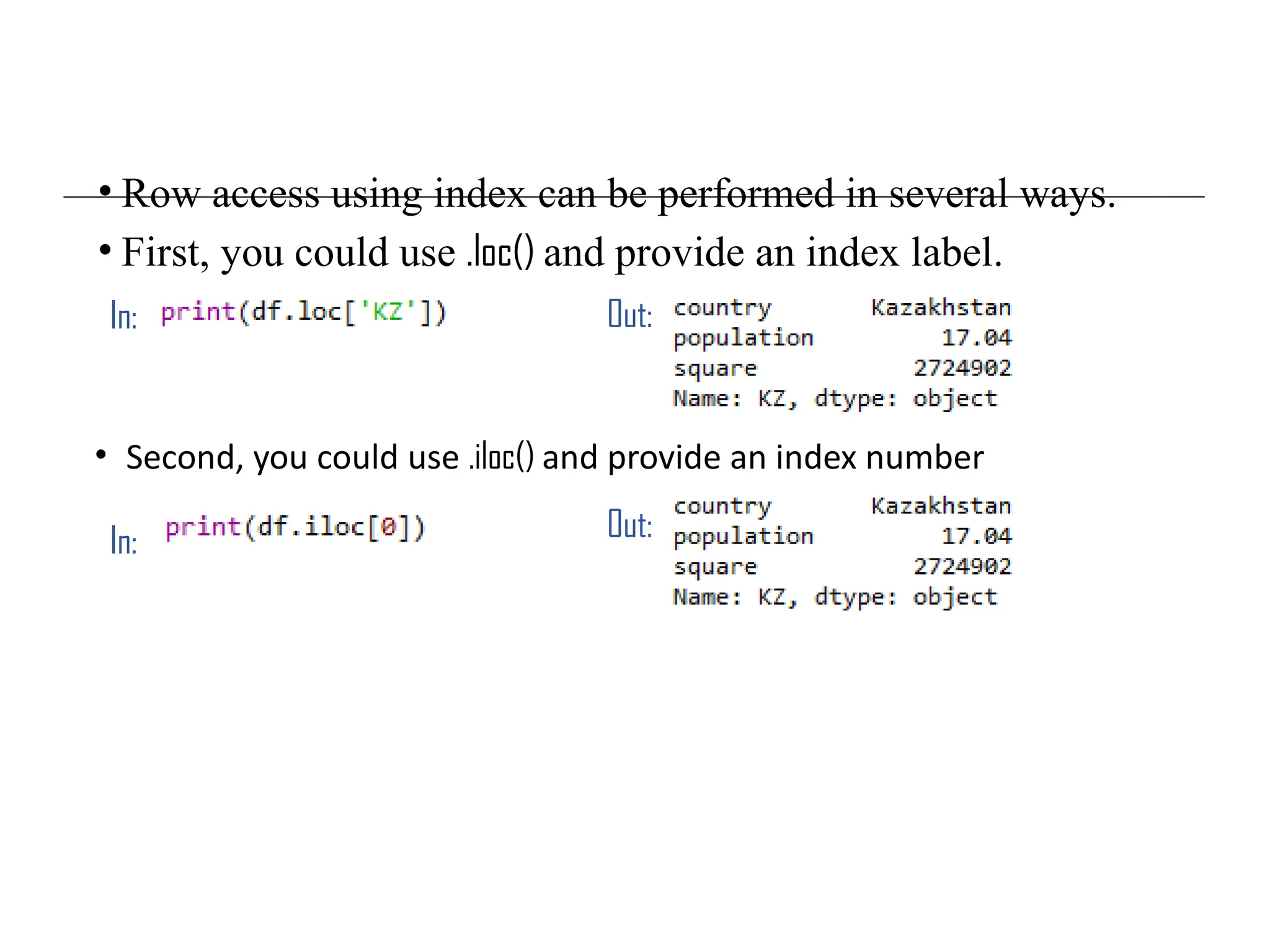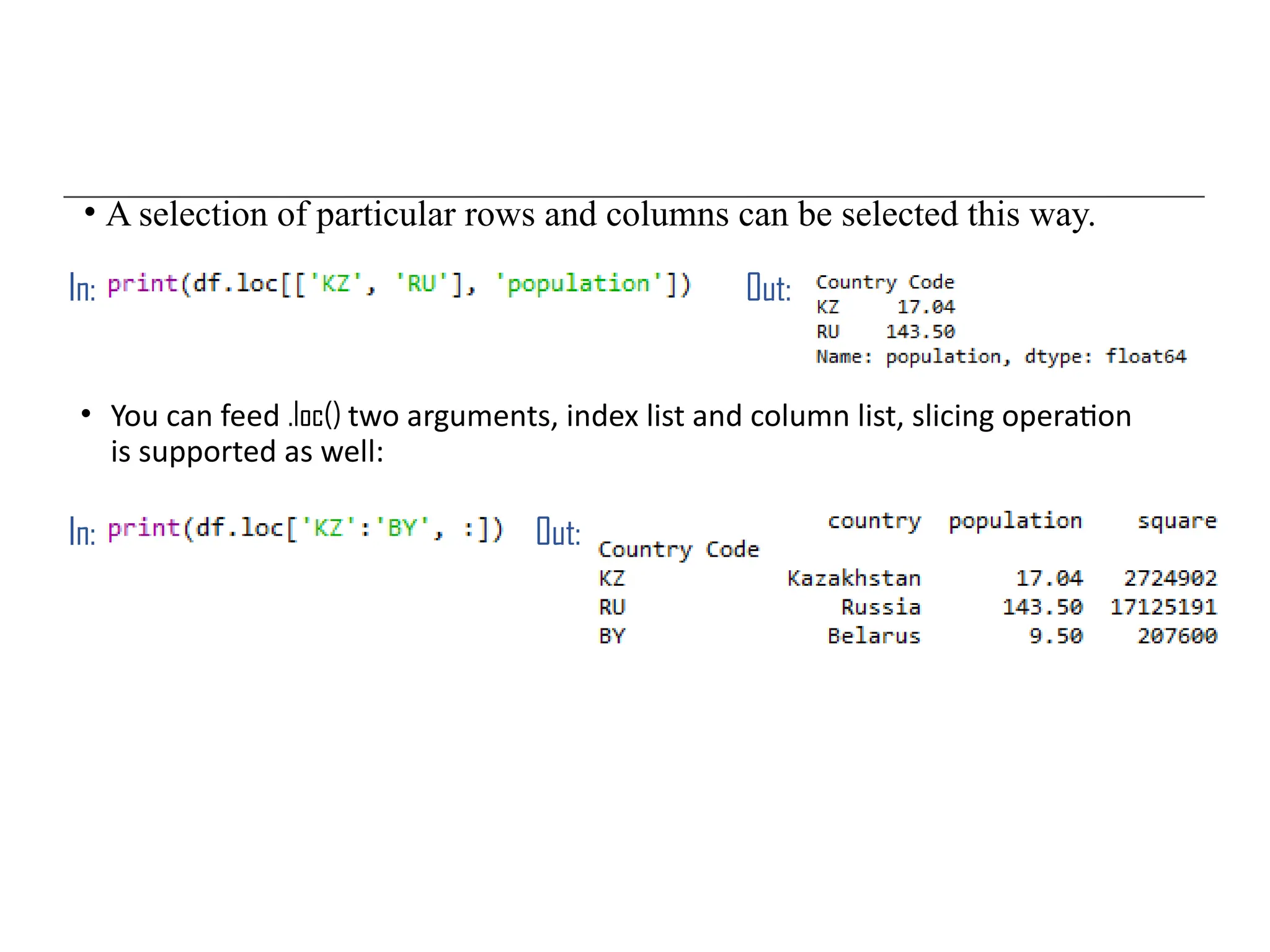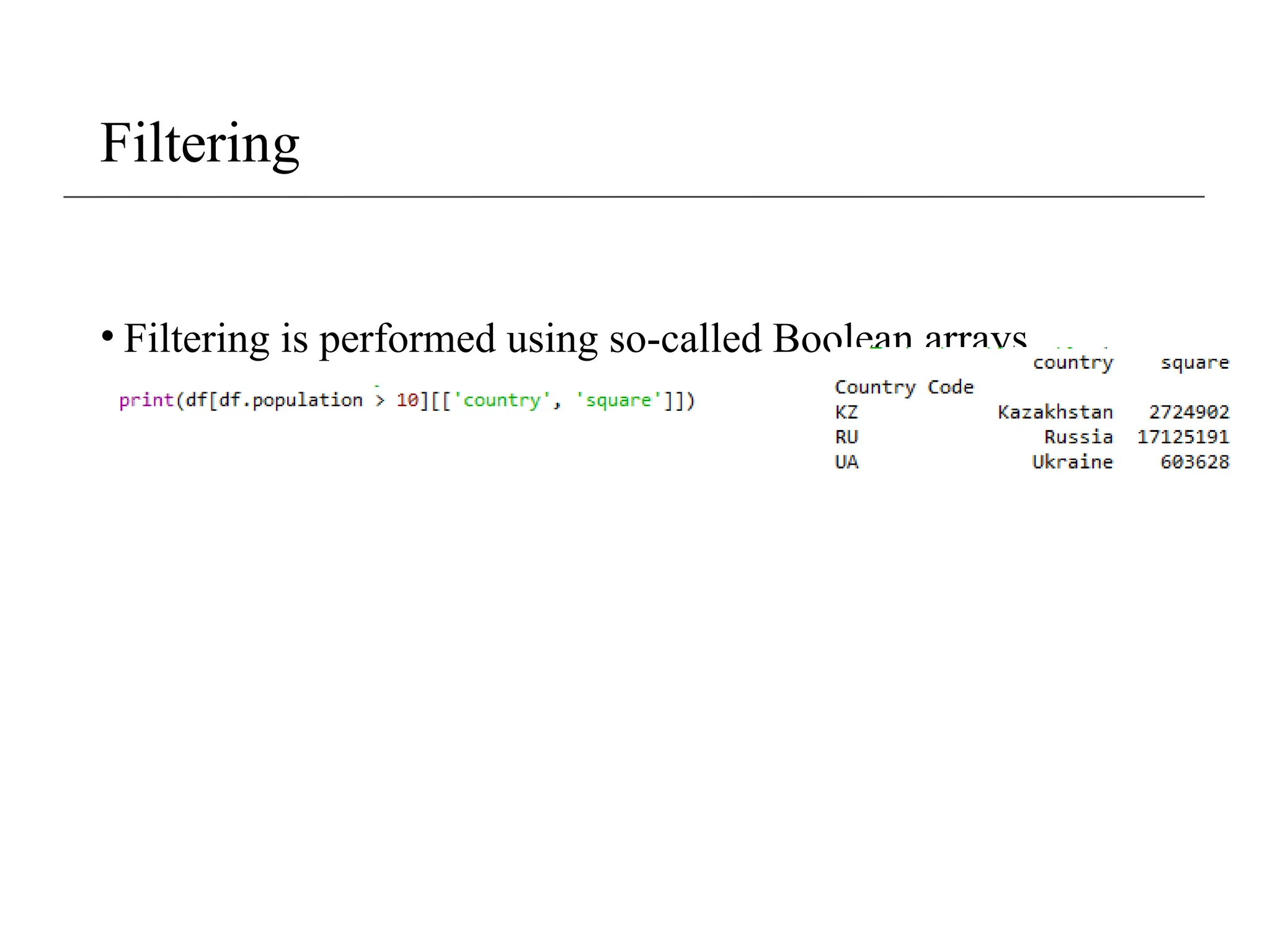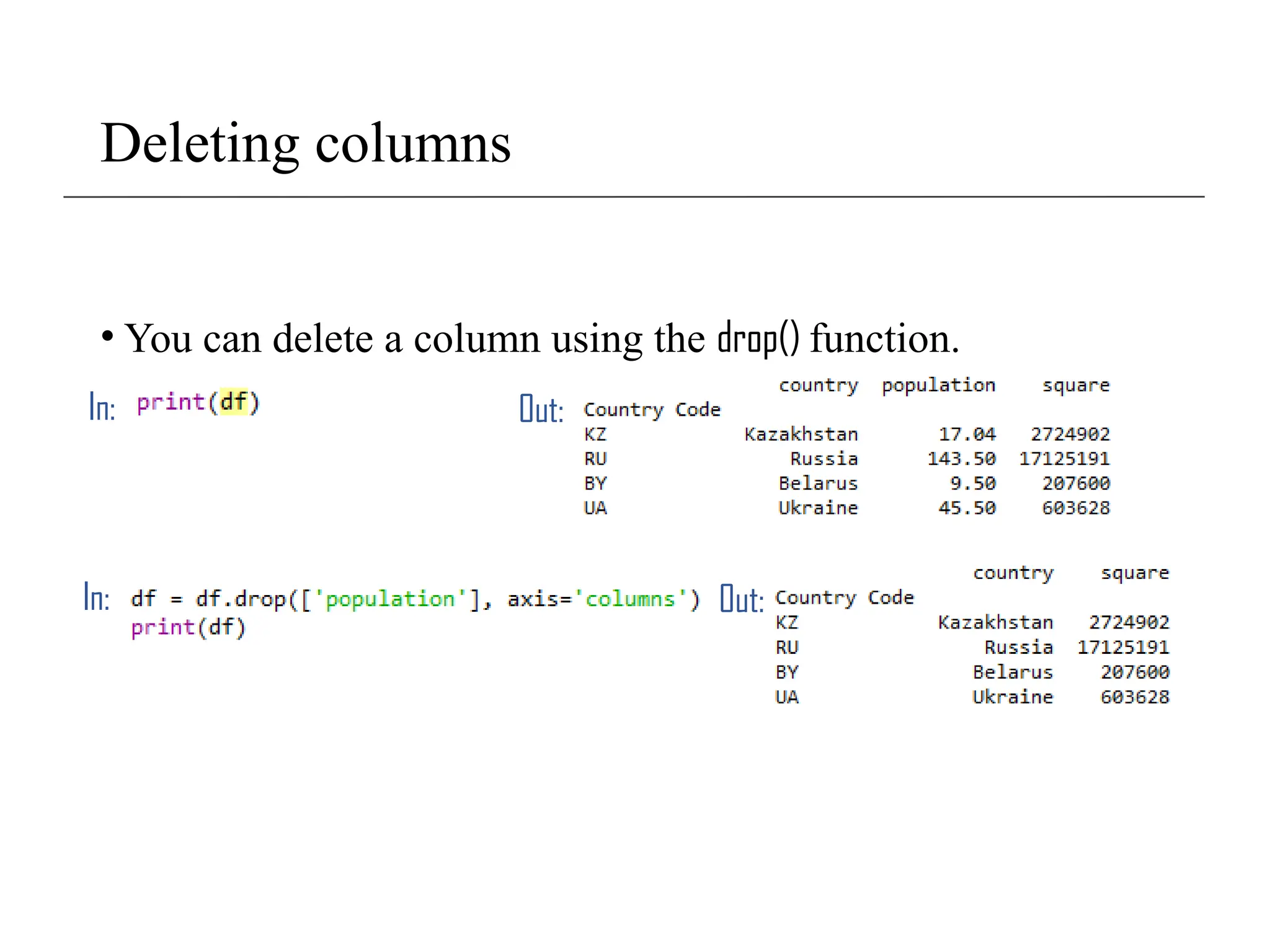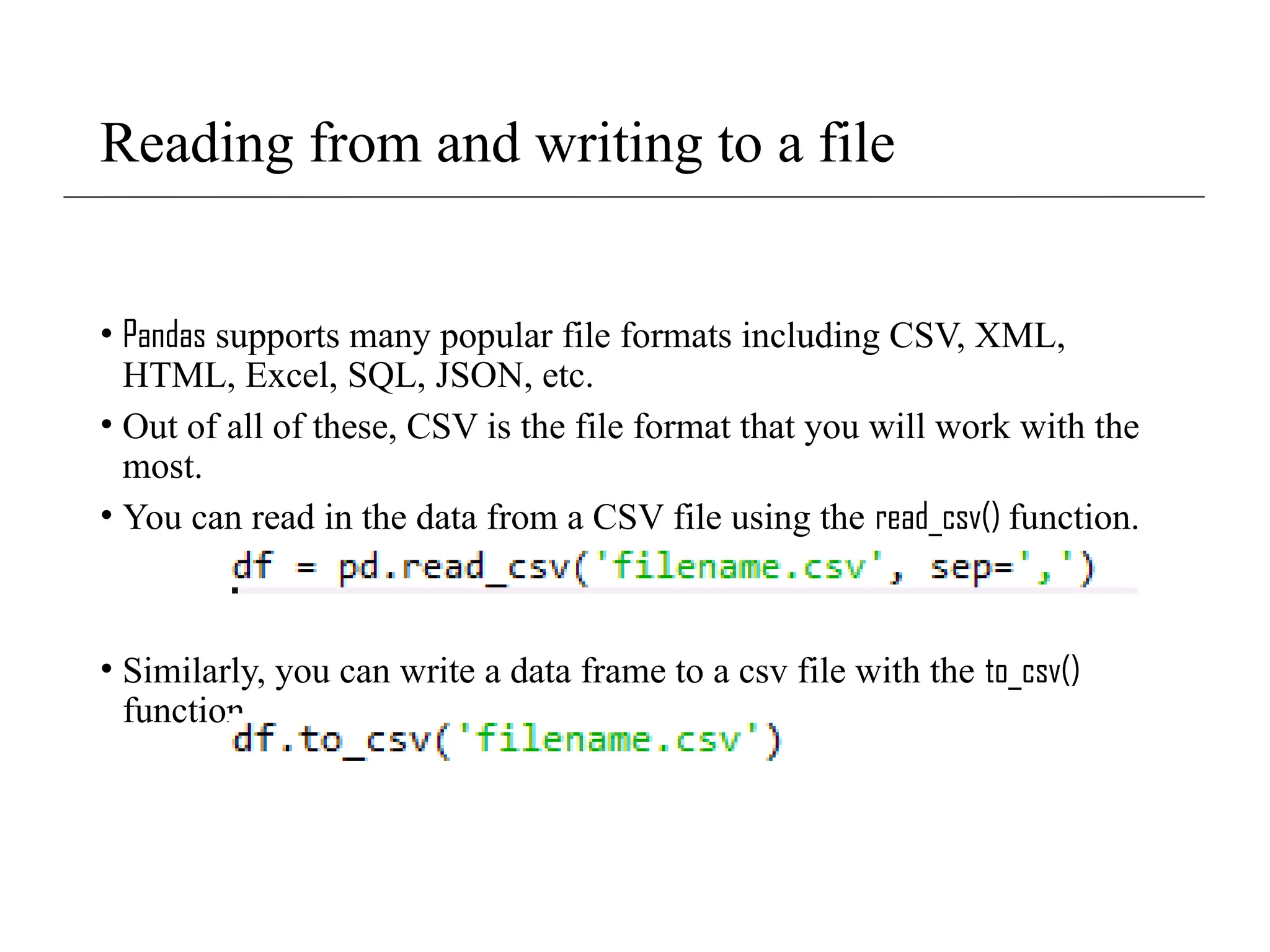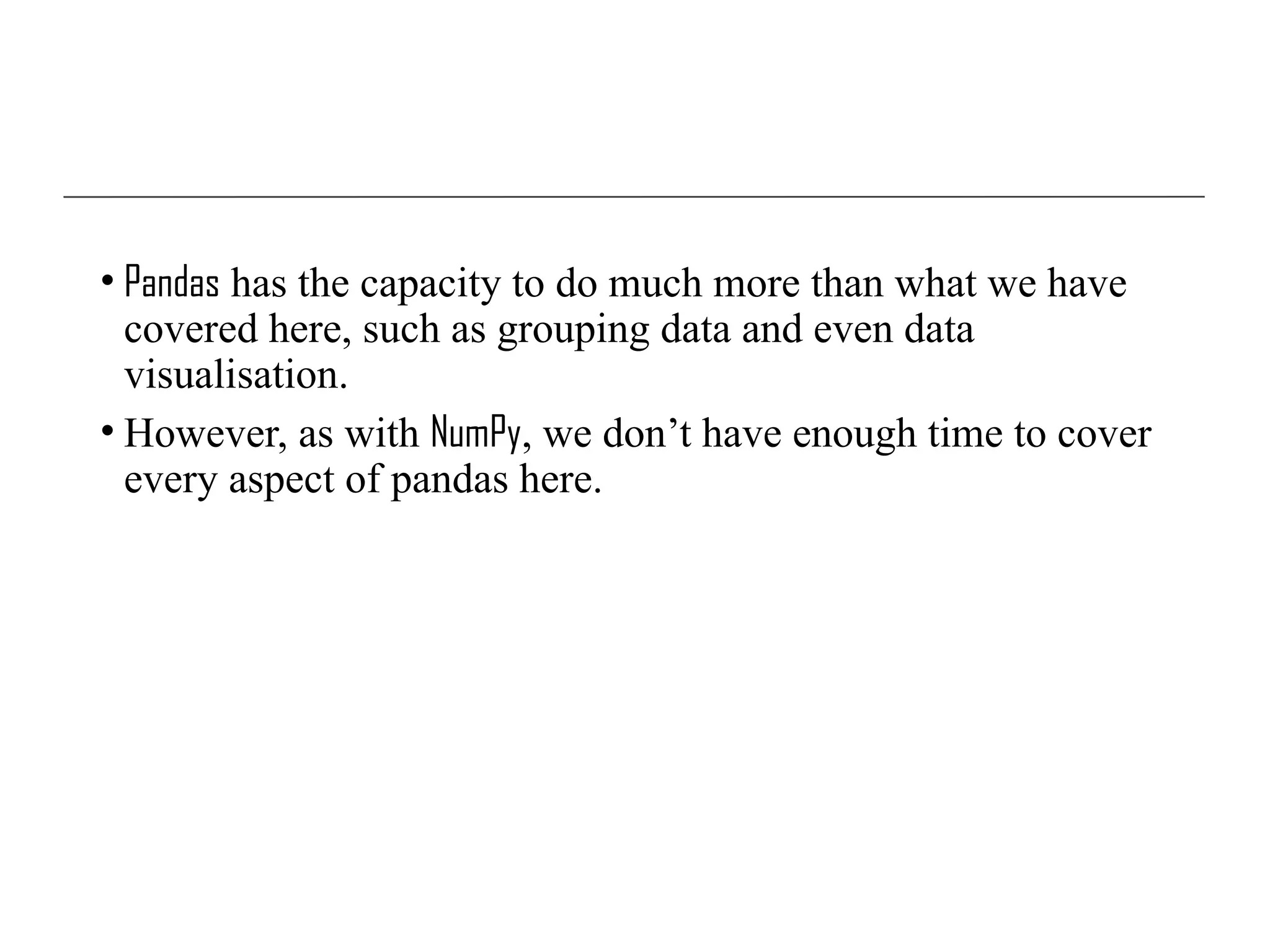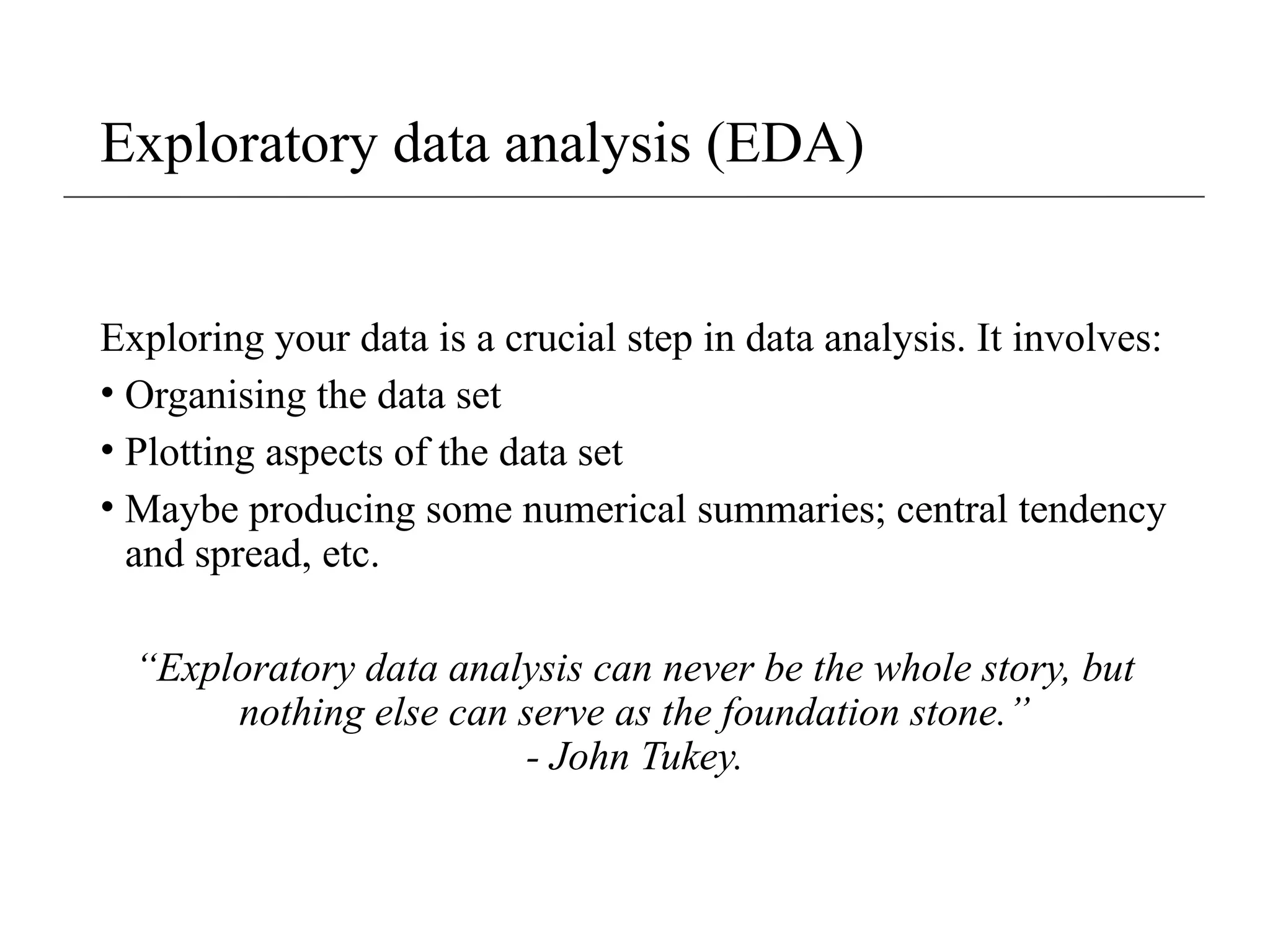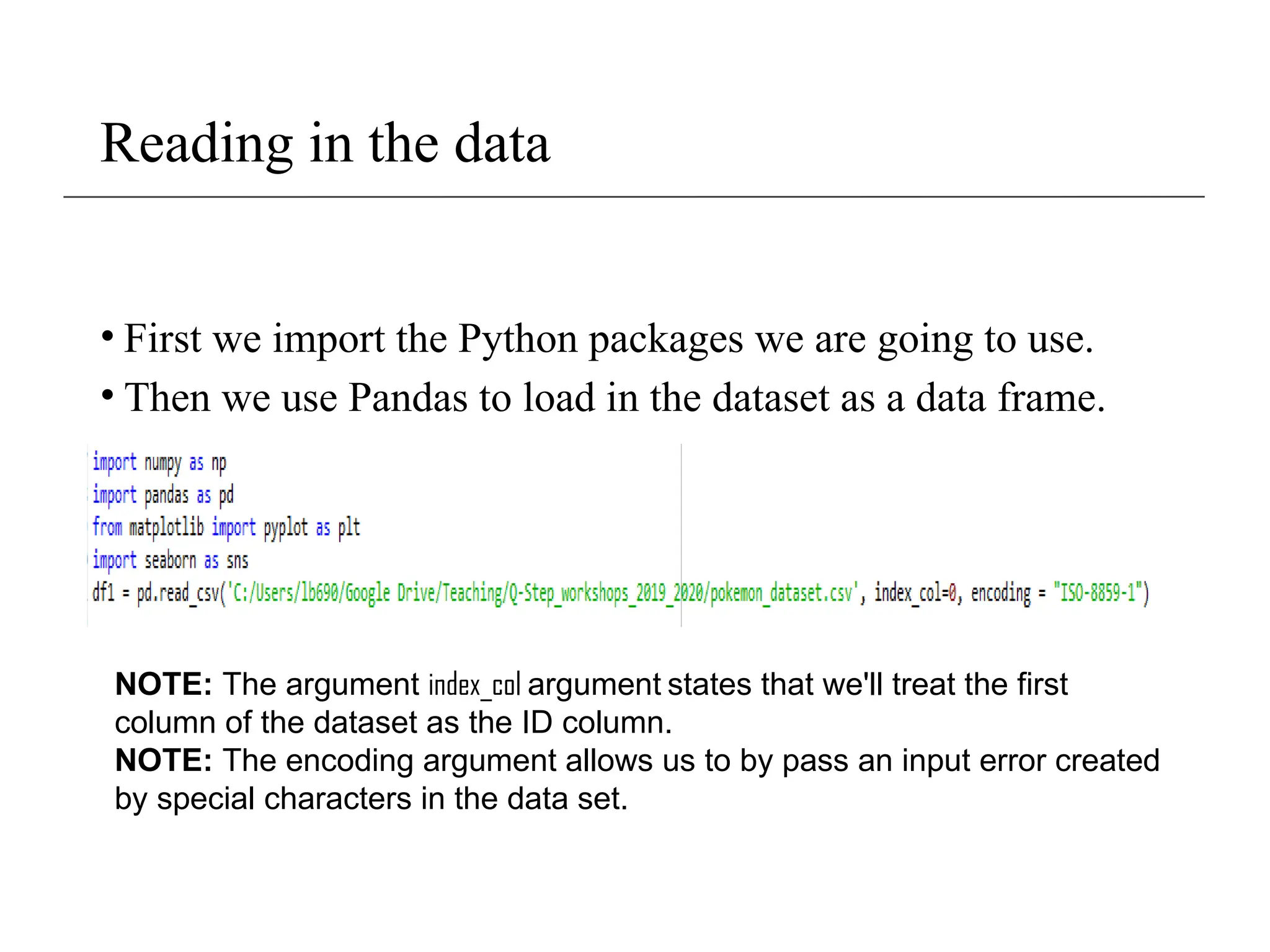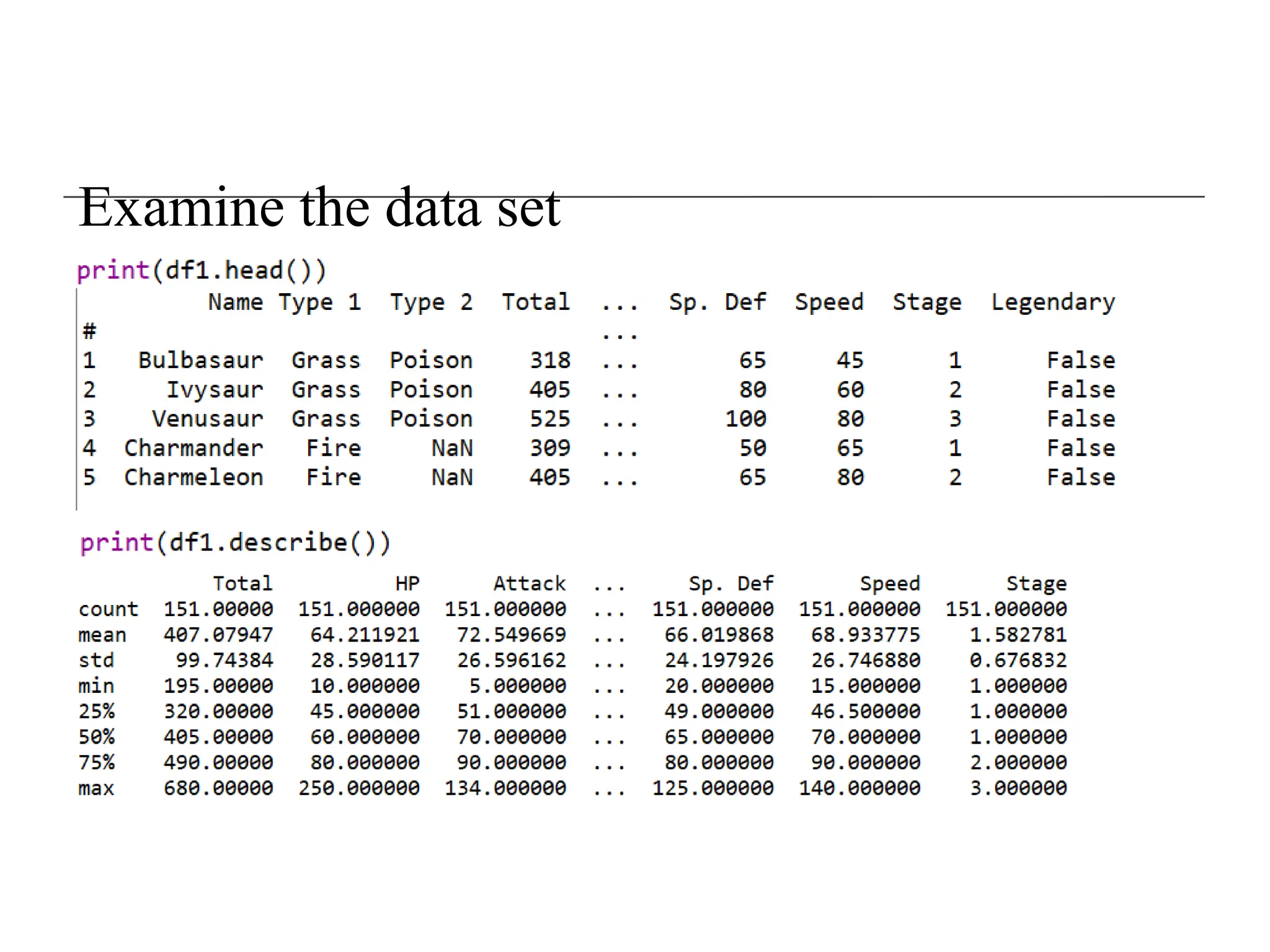Chapter 5 discusses the usage of NumPy for numerical data analysis in Python, highlighting its efficient storage and manipulation of numerical arrays and various mathematical functions. It compares NumPy's ndarray to Python lists, emphasizing speed and memory efficiency, while also covering array creation, indexing, arithmetic operations, and filtering. Additionally, the chapter introduces Pandas as a high-level data analysis tool that utilizes NumPy and presents its main structures, including DataFrames and Series.

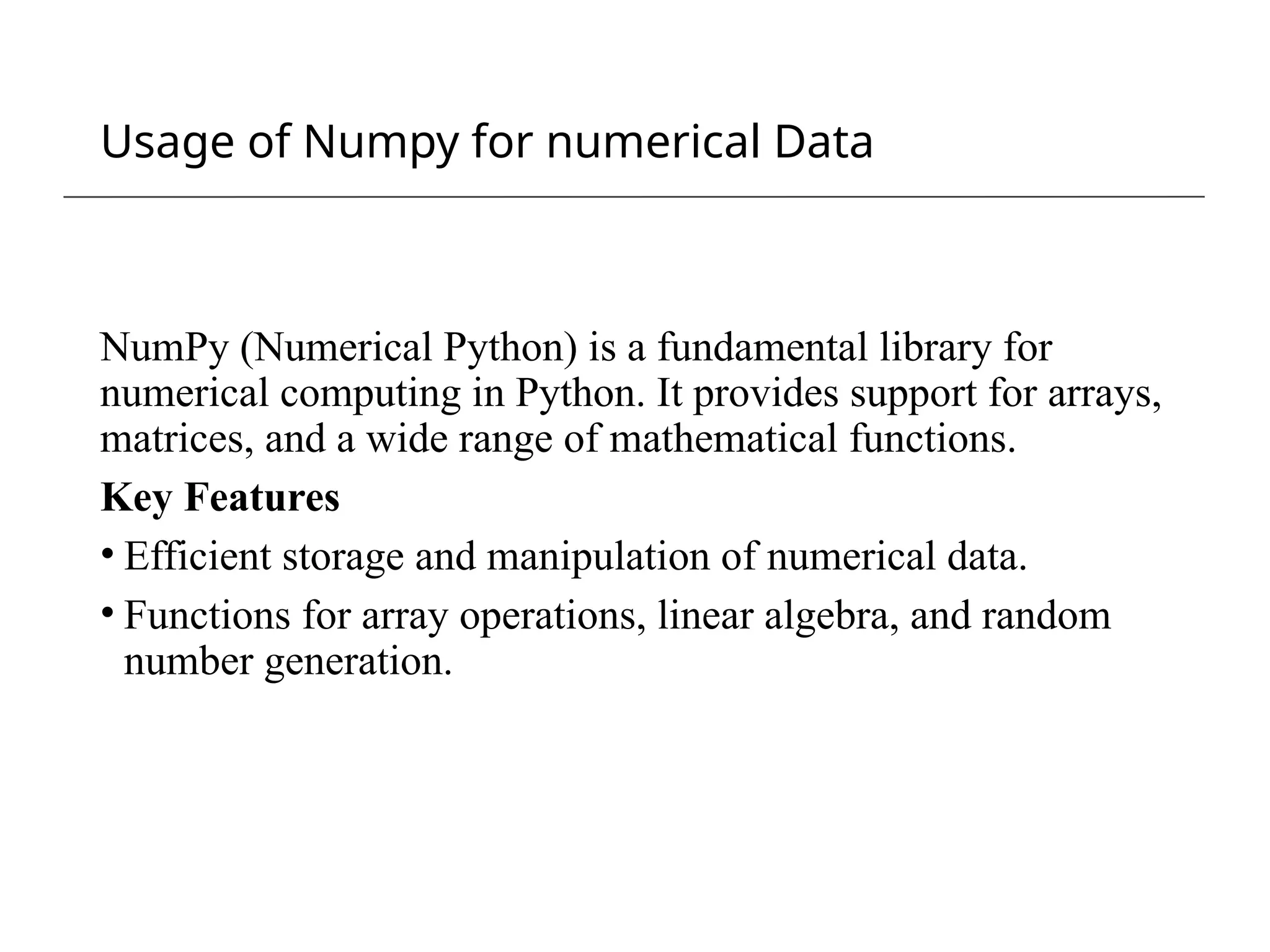
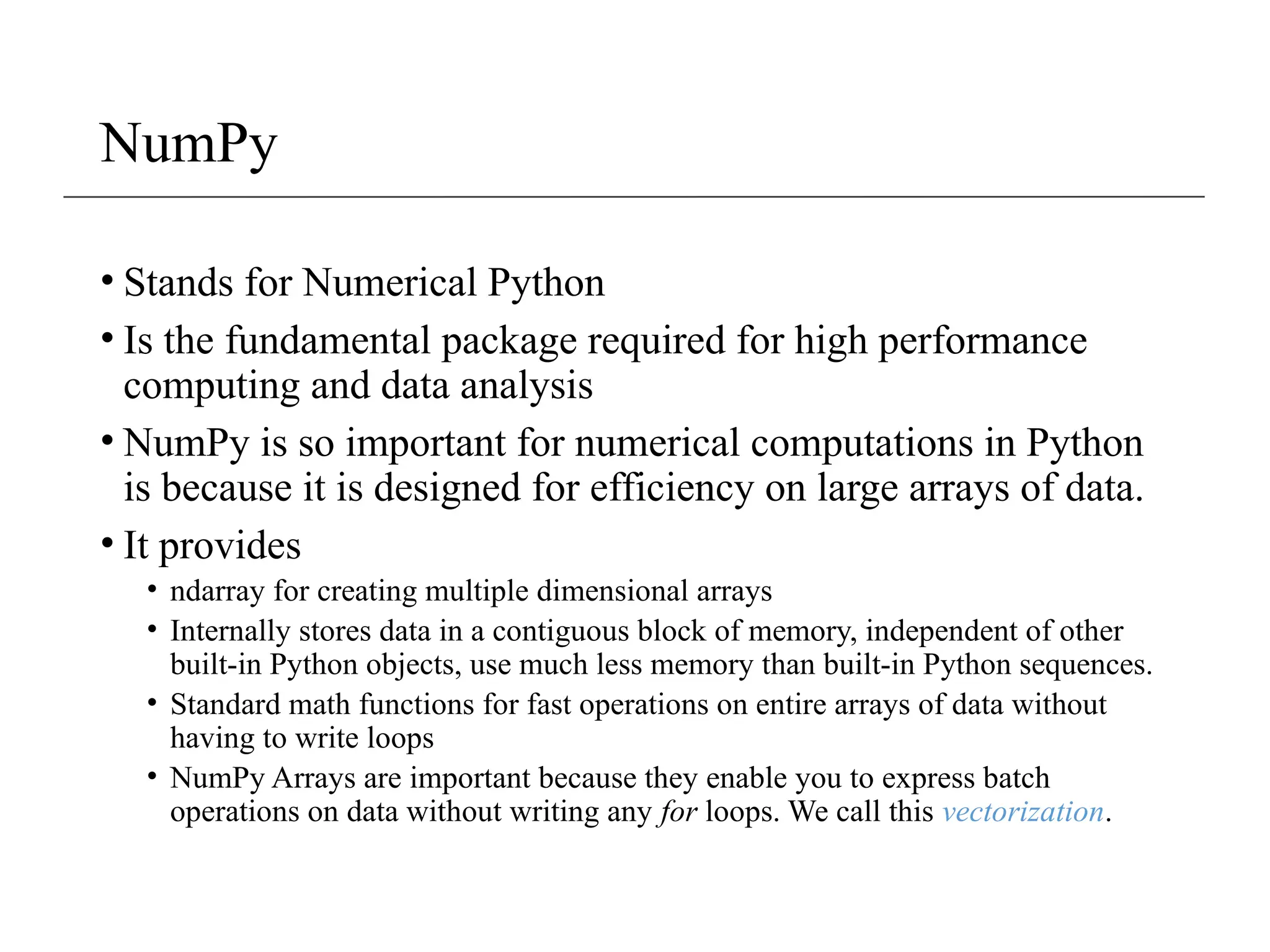
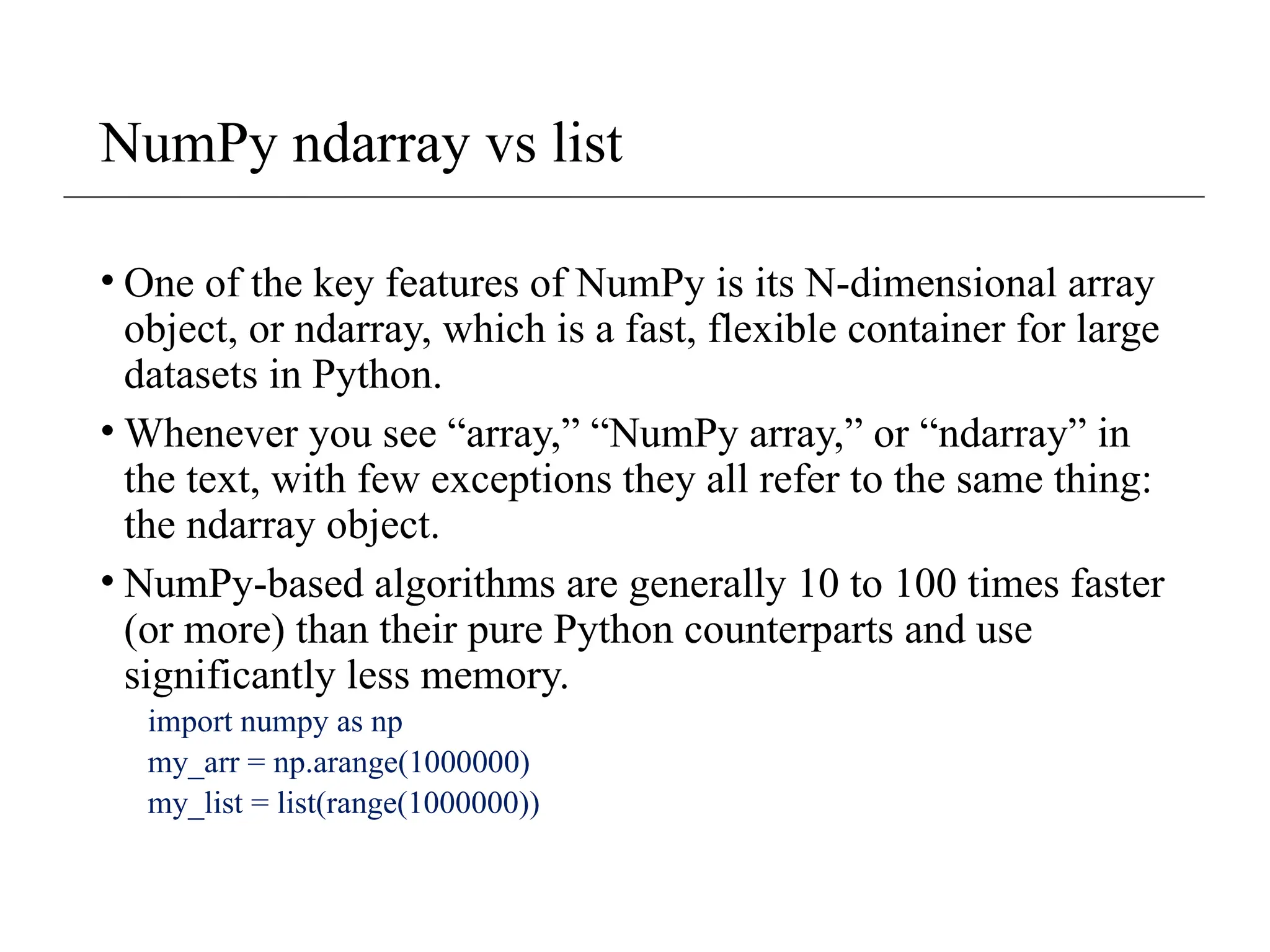
![ndarray • ndarray is used for storage of homogeneous data • i.e., all elements the same type • Every array must have a shape and a dtype • Supports convenient slicing, indexing and efficient vectorized computation import numpy as np data1 = [6, 7.5, 8, 0, 1] arr1 = np.array(data1) print(arr1) print(arr1.dtype) print(arr1.shape) print(arr1.ndim)](https://image.slidesharecdn.com/chapter5-numpy-pandas-241211031219-a12ee52d/75/Chapter-5-Numpy-Pandas-pptx-python-programming-5-2048.jpg)
![Creating ndarrays Using list of lists import numpy as np data2 = [[1, 2, 3, 4], [5, 6, 7, 8]] #list of lists arr2 = np.array(data2) print(arr2.ndim) #2 print(arr2.shape) # (2,4)](https://image.slidesharecdn.com/chapter5-numpy-pandas-241211031219-a12ee52d/75/Chapter-5-Numpy-Pandas-pptx-python-programming-6-2048.jpg)
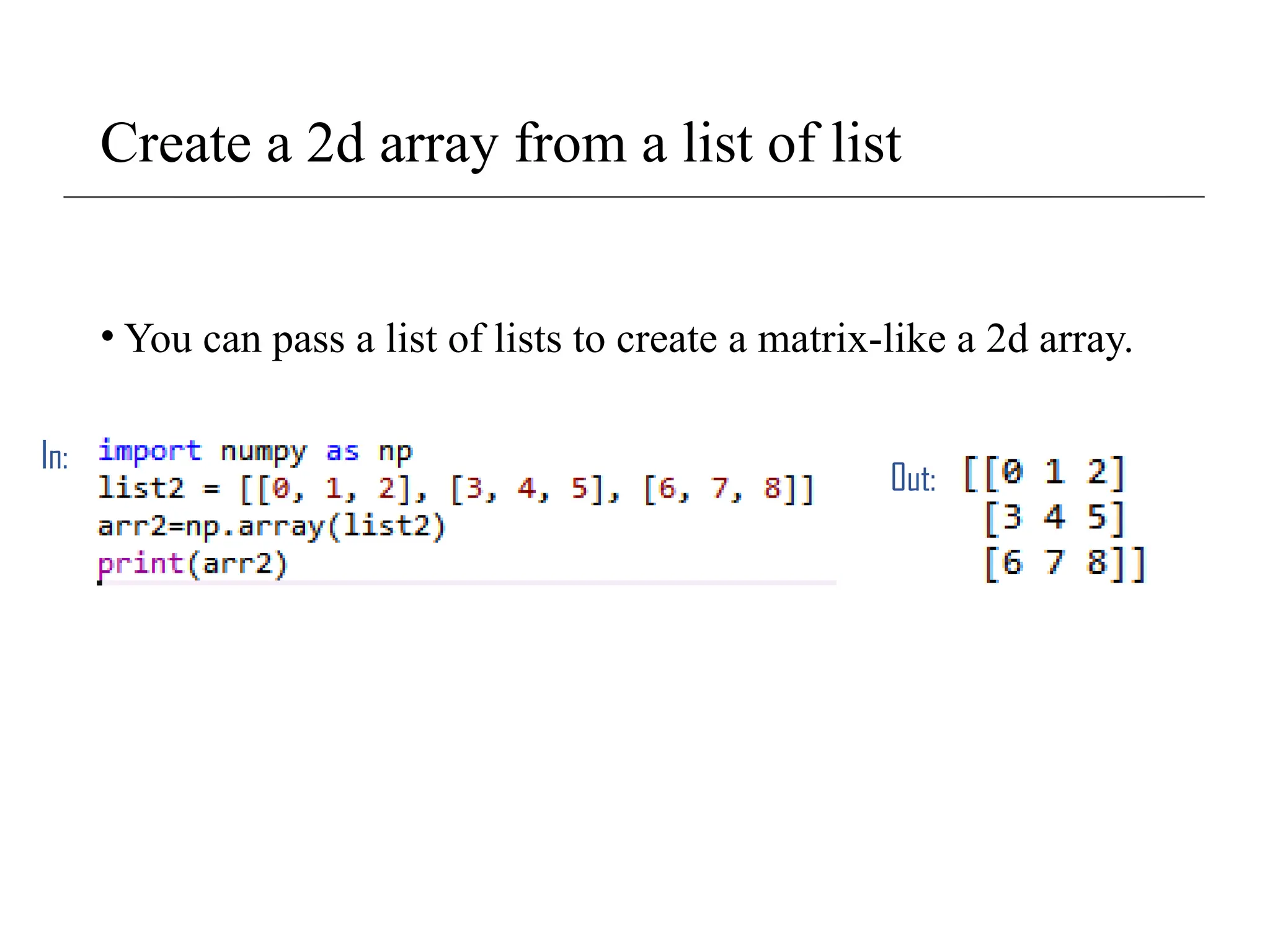
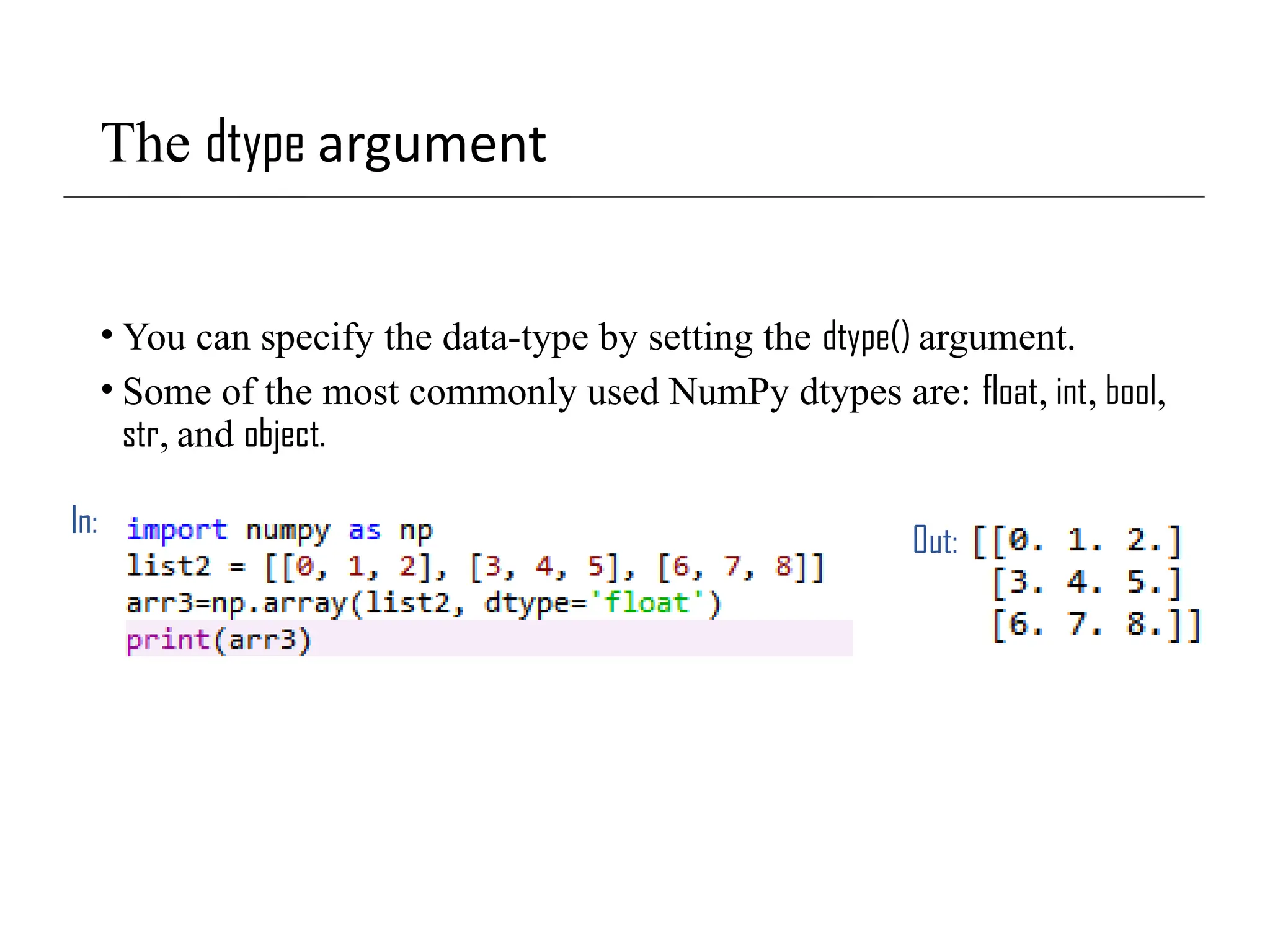
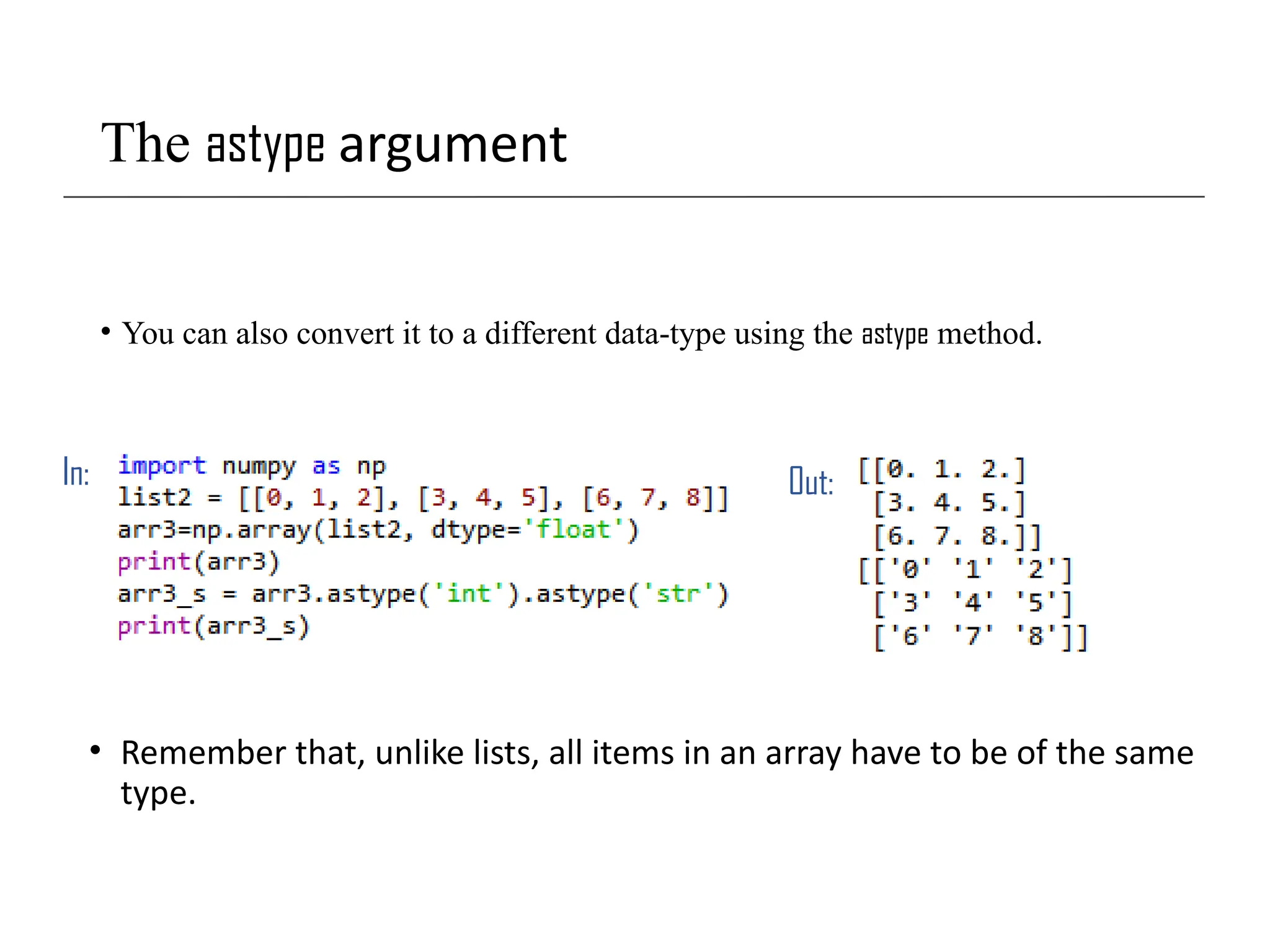
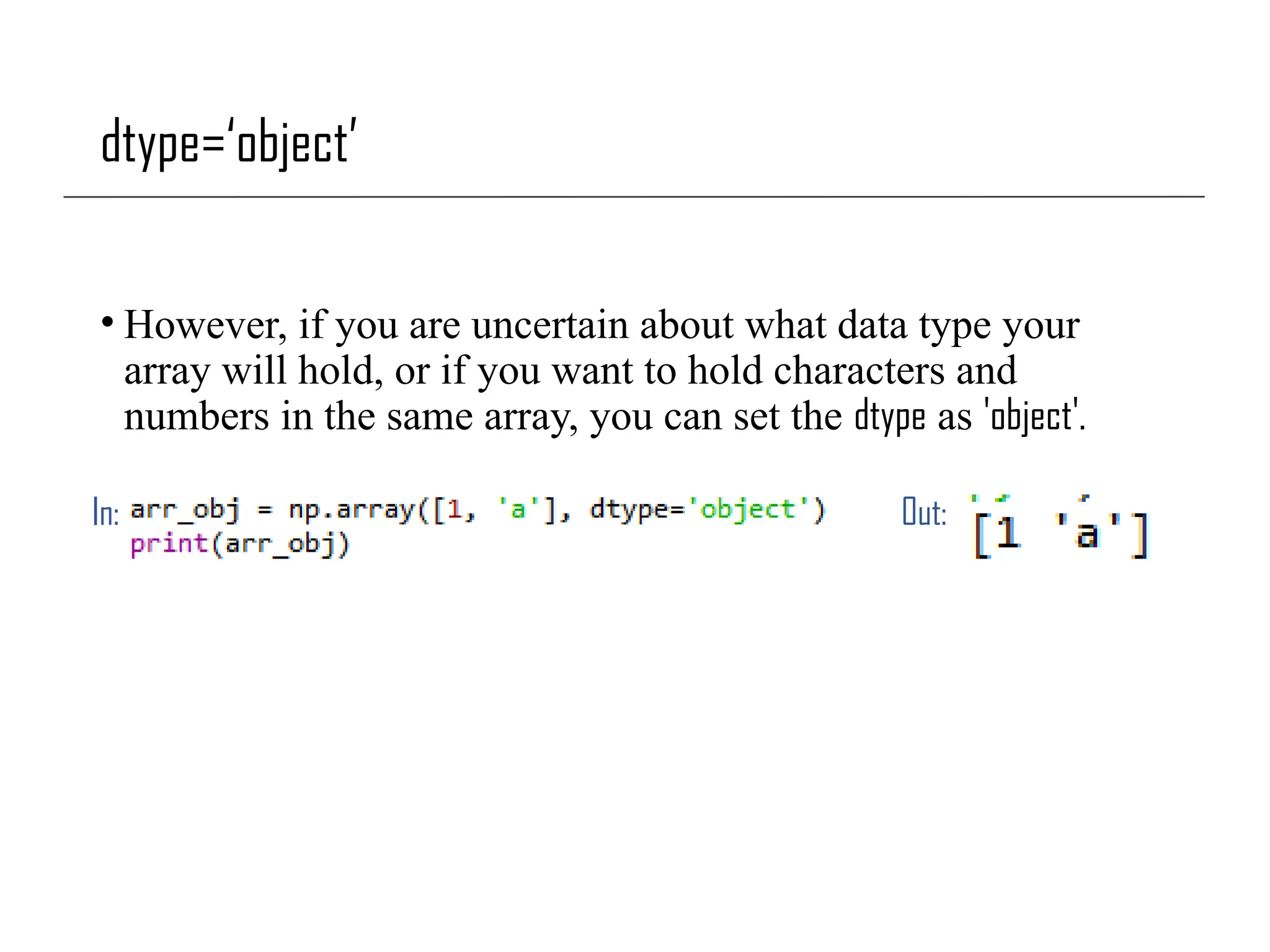
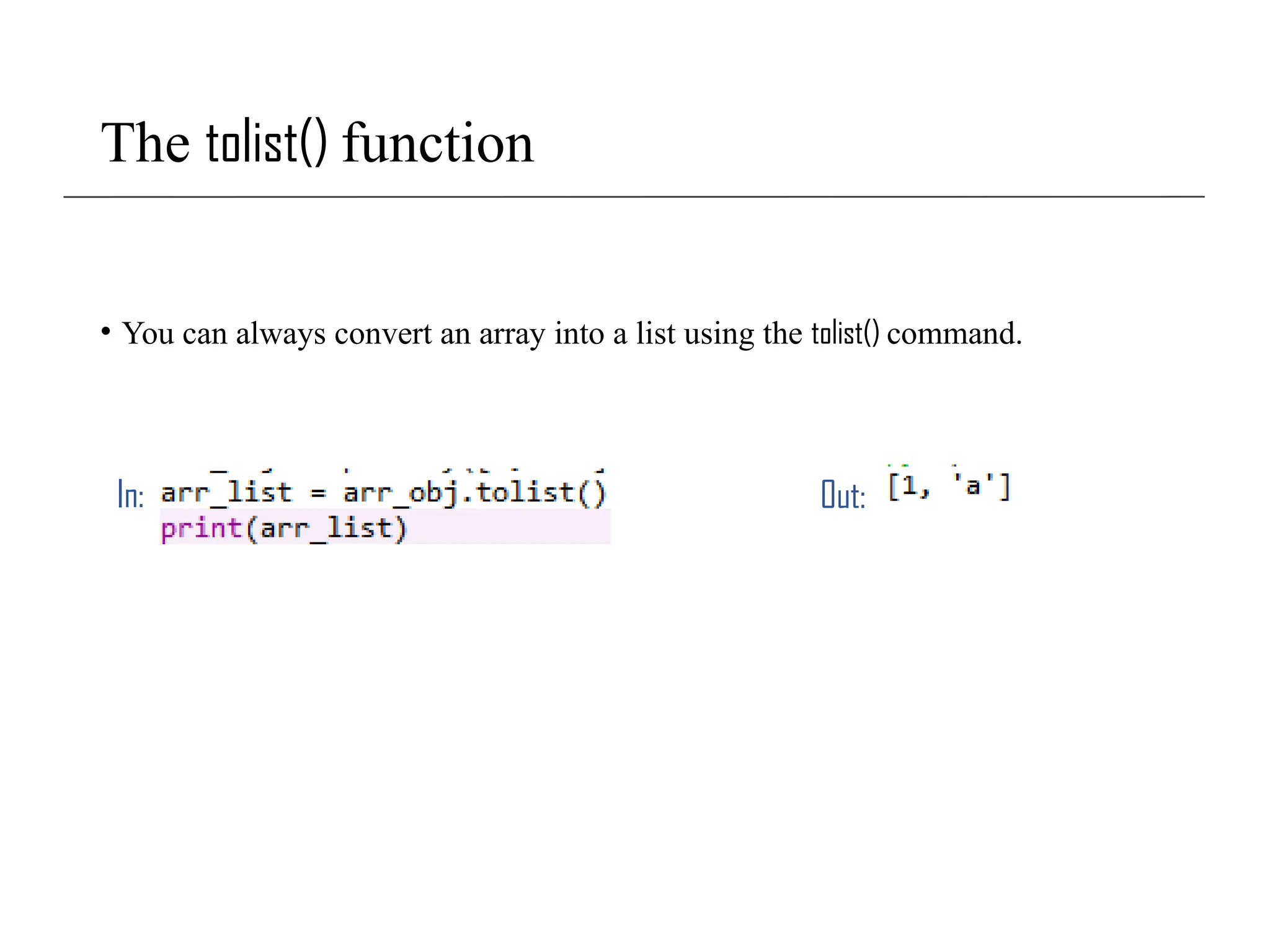
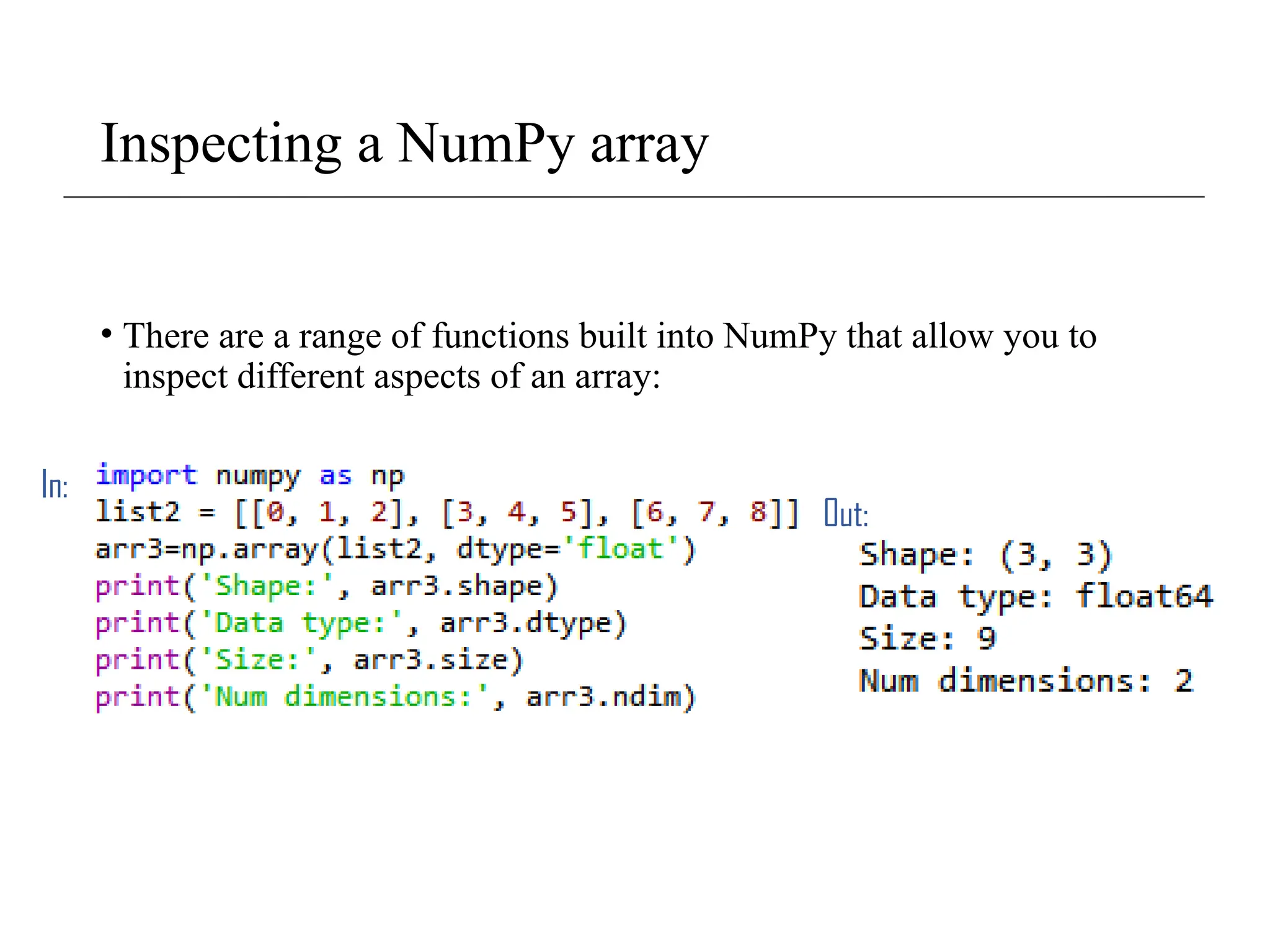
![array = np.array([[0,1,2],[2,3,4]]) [[0 1 2] [2 3 4]] array = np.zeros((2,3)) [[0. 0. 0.] [0. 0. 0.]] array = np.ones((2,3)) [[1. 1. 1.] [1. 1. 1.]] array = np.eye(3) [[1. 0. 0.] [0. 1. 0.] [0. 0. 1.]] array = np.arange(0, 10, 2) [0, 2, 4, 6, 8] array = np.random.randint(0, 10, (3,3)) [[6 4 3] [1 5 6] [9 8 5]] Creating ndarrays arange is an array-valued version of the built-in Python range function](https://image.slidesharecdn.com/chapter5-numpy-pandas-241211031219-a12ee52d/75/Chapter-5-Numpy-Pandas-pptx-python-programming-13-2048.jpg)
![Arithmatic with NumPy Arrays • Any arithmetic operations between equal-size arrays applies the operation element-wise: arr = np.array([[1., 2., 3.], [4., 5., 6.]]) print(arr) [[1. 2. 3.] [4. 5. 6.]] print(arr * arr) [[ 1. 4. 9.] [16. 25. 36.]] print(arr - arr) [[0. 0. 0.] [0. 0. 0.]]](https://image.slidesharecdn.com/chapter5-numpy-pandas-241211031219-a12ee52d/75/Chapter-5-Numpy-Pandas-pptx-python-programming-14-2048.jpg)
![Arithmatic with NumPy Arrays • Arithmetic operations with scalars propagate the scalar argument to each element in the array: • Comparisons between arrays of the same size yield boolean arrays: arr = np.array([[1., 2., 3.], [4., 5., 6.]]) print(arr) [[1. 2. 3.] [4. 5. 6.]] print(arr **2) [[ 1. 4. 9.] [16. 25. 36.]] arr2 = np.array([[0., 4., 1.], [7., 2., 12.]]) print(arr2) [[ 0. 4. 1.] [ 7. 2. 12.]] print(arr2 > arr) [[False True False] [ True False True]]](https://image.slidesharecdn.com/chapter5-numpy-pandas-241211031219-a12ee52d/75/Chapter-5-Numpy-Pandas-pptx-python-programming-15-2048.jpg)
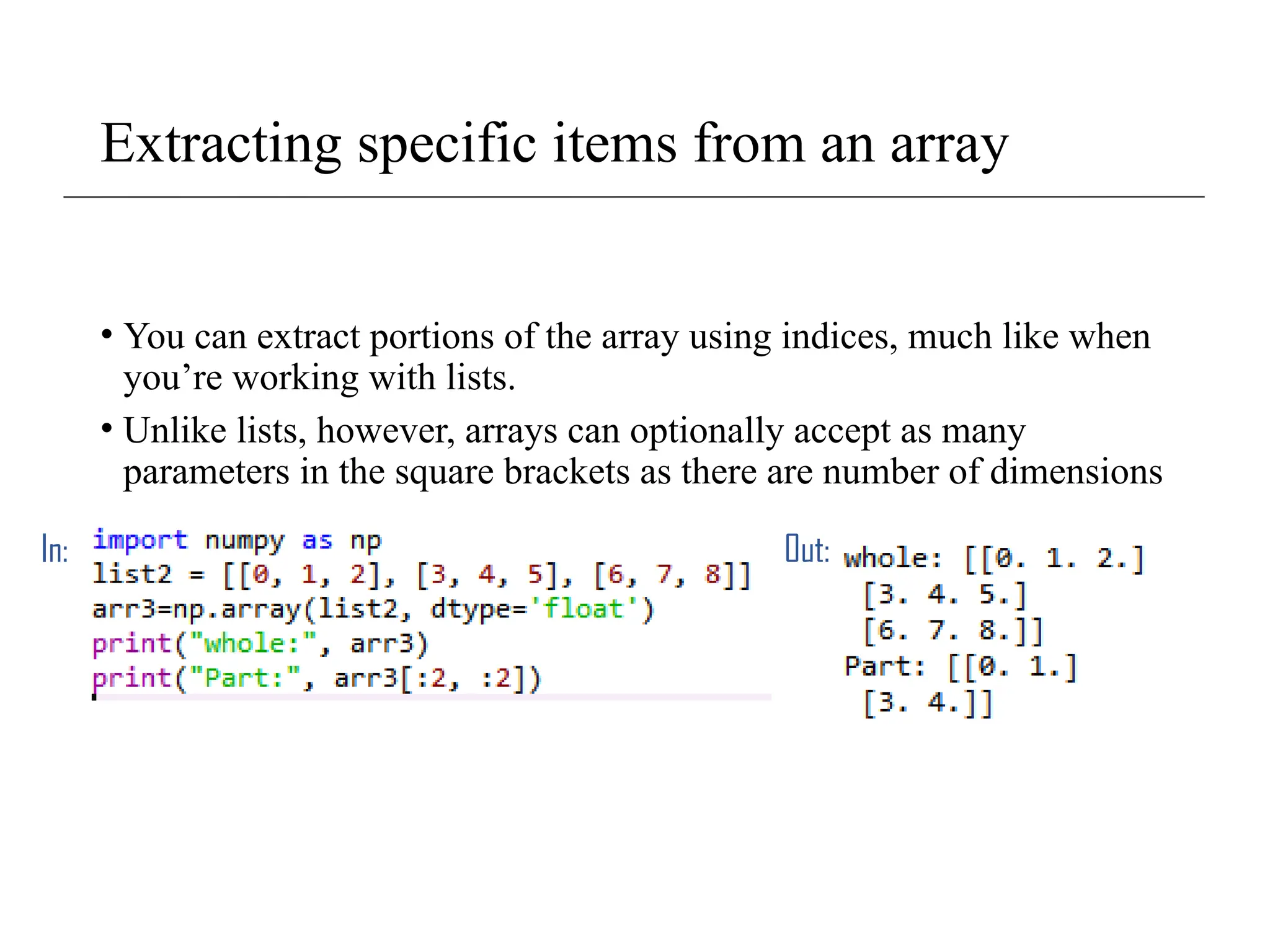
![Indexing and Slicing • One-dimensional arrays are simple; on the surface they act similarly to Python lists: arr = np.arange(10) print(arr) # [0 1 2 3 4 5 6 7 8 9] print(arr[5]) #5 print(arr[5:8]) #[5 6 7] arr[5:8] = 12 print(arr) #[ 0 1 2 3 4 12 12 12 8 9]](https://image.slidesharecdn.com/chapter5-numpy-pandas-241211031219-a12ee52d/75/Chapter-5-Numpy-Pandas-pptx-python-programming-17-2048.jpg)
![Indexing and Slicing • As you can see, if you assign a scalar value to a slice, as in arr[5:8] = 12, the value is propagated (or broadcasted) to the entire selection. • An important first distinction from Python’s built-in lists is that array slices are views on the original array. • This means that the data is not copied, and any modifications to the view will be reflected in the source array. arr = np.arange(10) print(arr) # [0 1 2 3 4 5 6 7 8 9] arr_slice = arr[5:8] print(arr_slice) # [5 6 7] arr_slice[1] = 12345 print(arr) # [ 0 1 2 3 4 5 12345 7 8 9] arr_slice[:] = 64 print(arr) # [ 0 1 2 3 4 64 64 64 8 9]](https://image.slidesharecdn.com/chapter5-numpy-pandas-241211031219-a12ee52d/75/Chapter-5-Numpy-Pandas-pptx-python-programming-18-2048.jpg)
![Indexing • In a two-dimensional array, the elements at each index are no longer scalars but rather one-dimensional arrays: • Thus, individual elements can be accessed recursively. But that is a bit too much work, so you can pass a comma-separated list of indices to select individual elements. • So these are equivalent: arr2d = np.array([[1, 2, 3], [4, 5, 6], [7, 8, 9]]) print(arr2d[2]) # [7 8 9] print(arr2d[0][2]) # 3 print(arr2d[0, 2]) #3](https://image.slidesharecdn.com/chapter5-numpy-pandas-241211031219-a12ee52d/75/Chapter-5-Numpy-Pandas-pptx-python-programming-19-2048.jpg)
![Activity 3 • Consider the two-dimensional array, arr2d. • Write a code to slice this array to display the last column, [[3] [6] [9]] • Write a code to slice this array to display the last 2 elements of middle array, [5 6] arr2d = np.array([[1, 2, 3], [4, 5, 6], [7, 8, 9]])](https://image.slidesharecdn.com/chapter5-numpy-pandas-241211031219-a12ee52d/75/Chapter-5-Numpy-Pandas-pptx-python-programming-20-2048.jpg)
